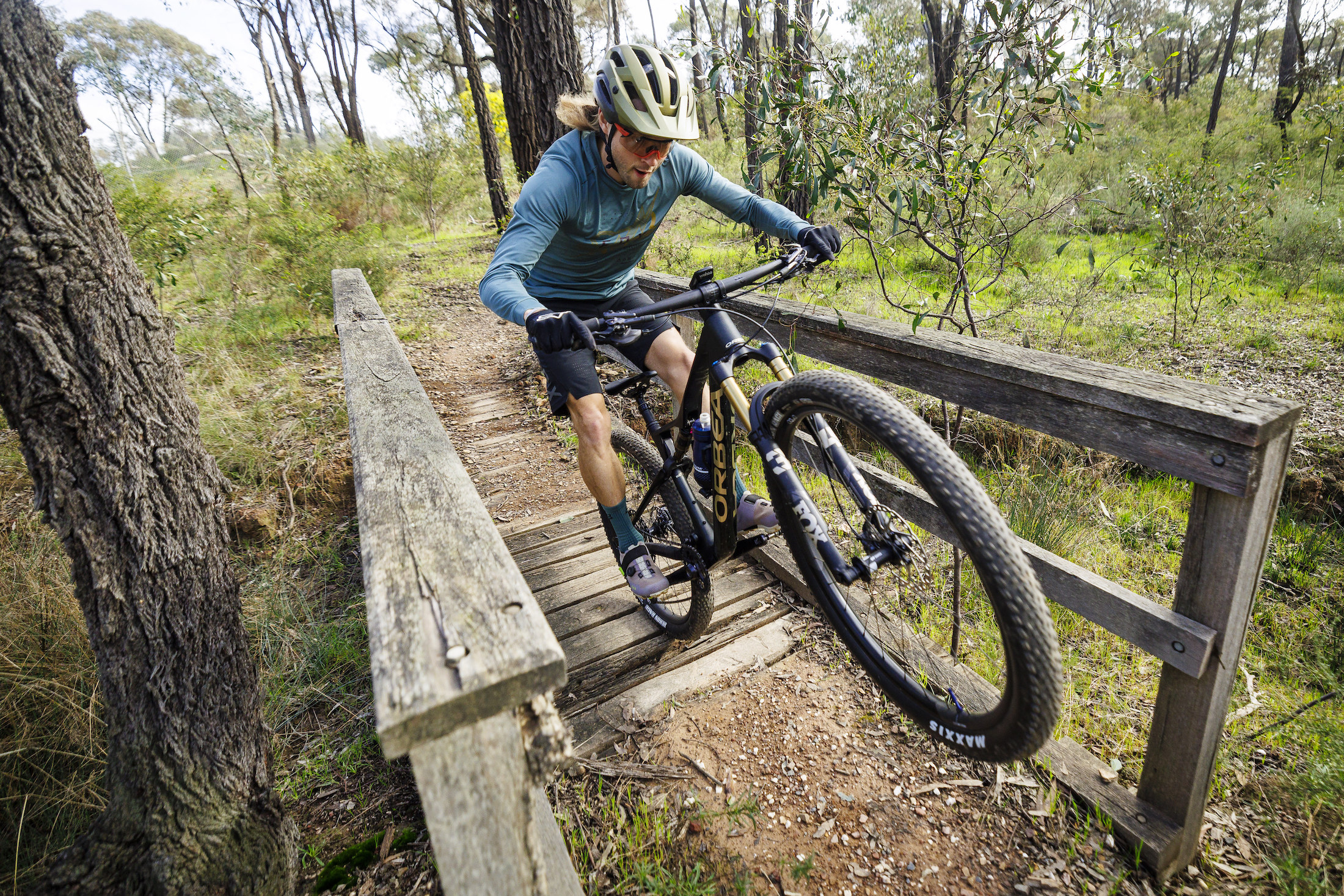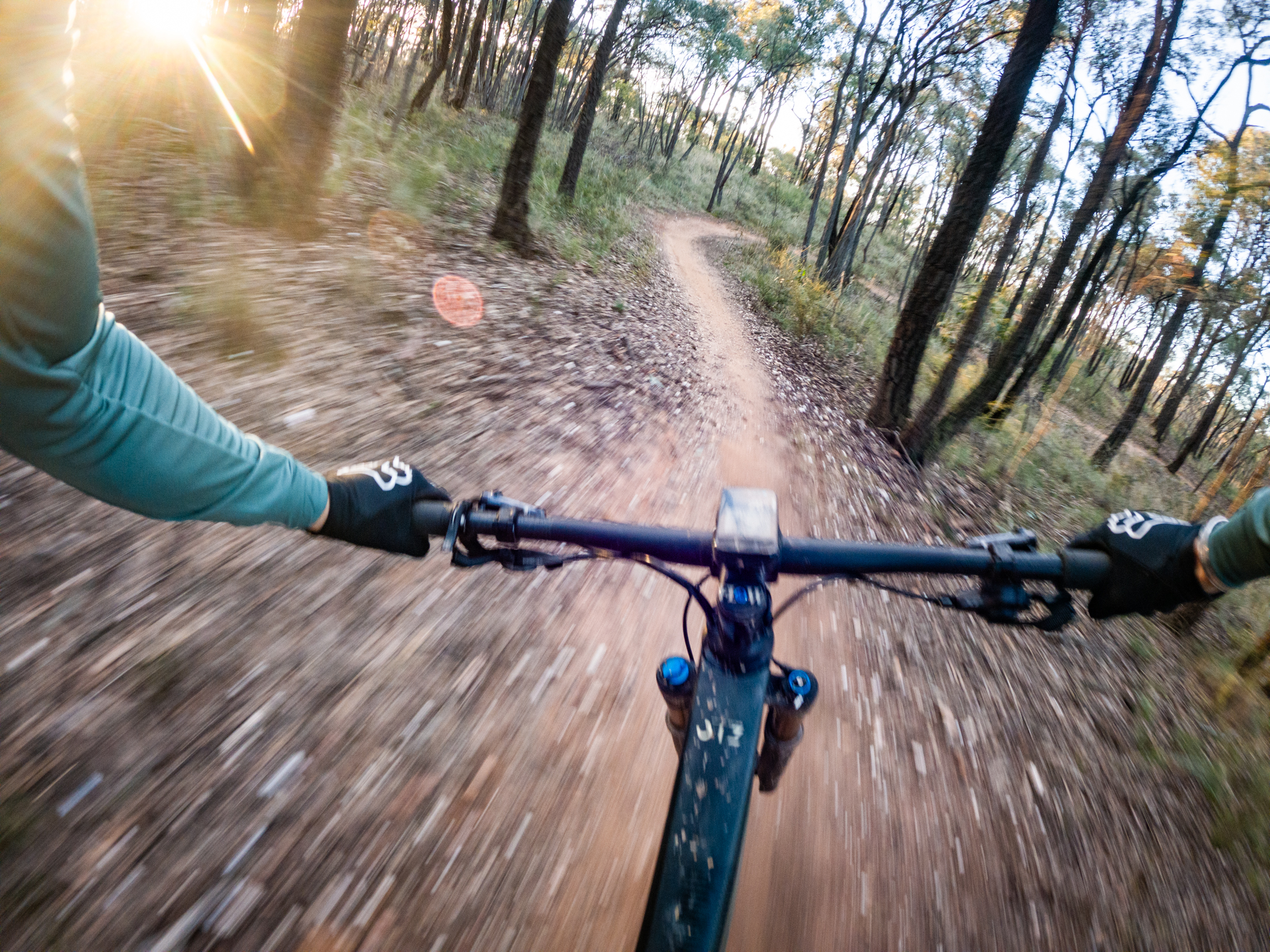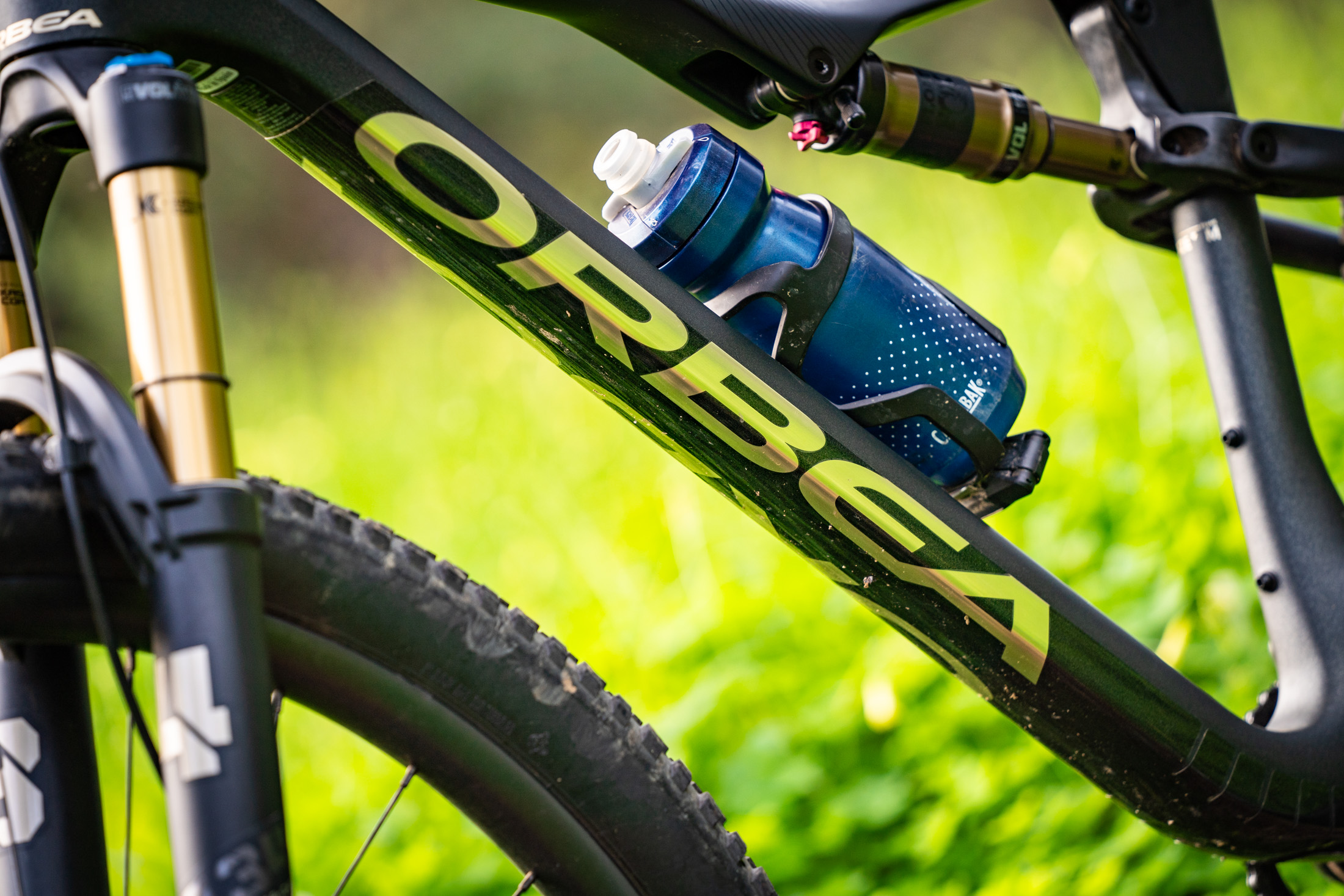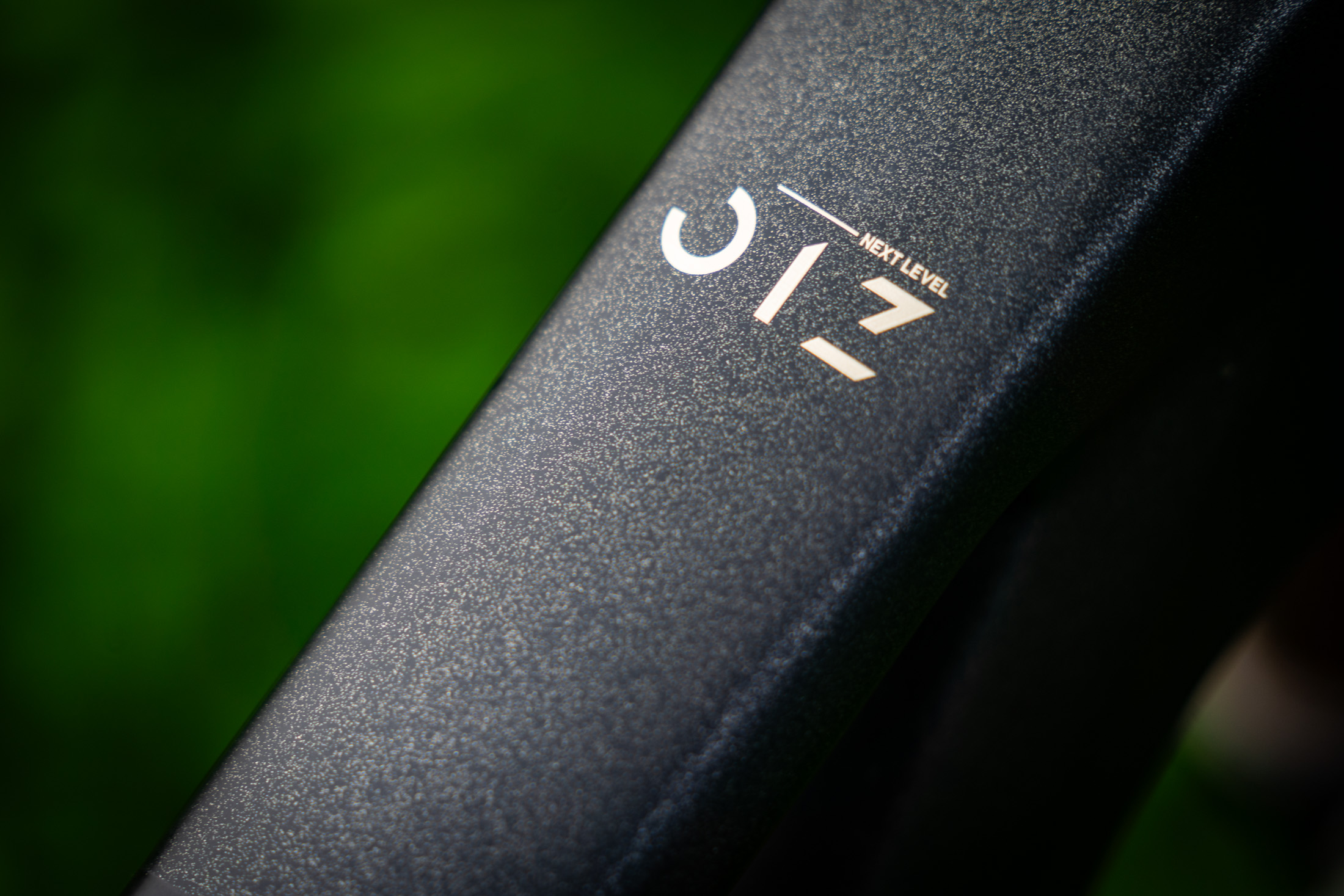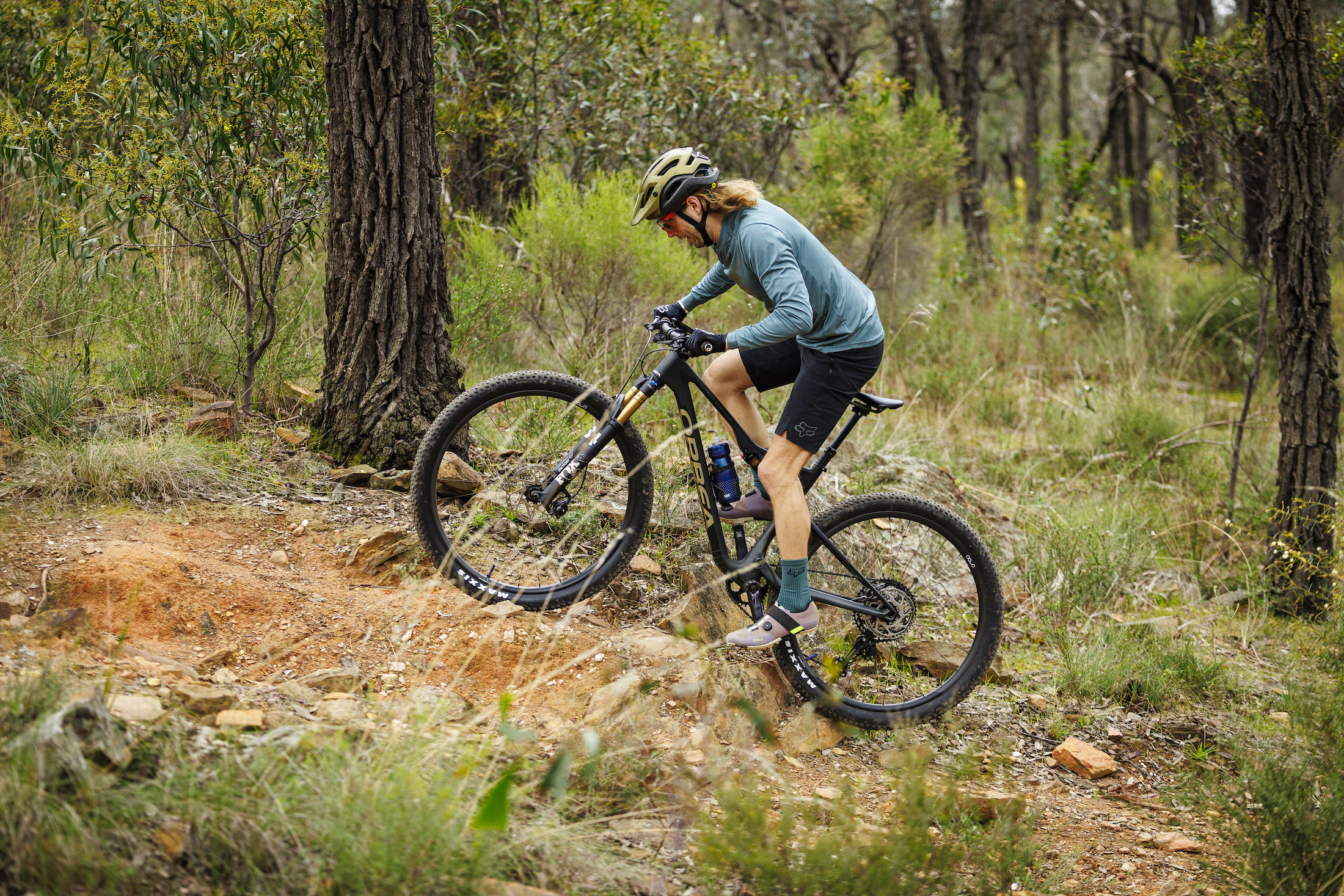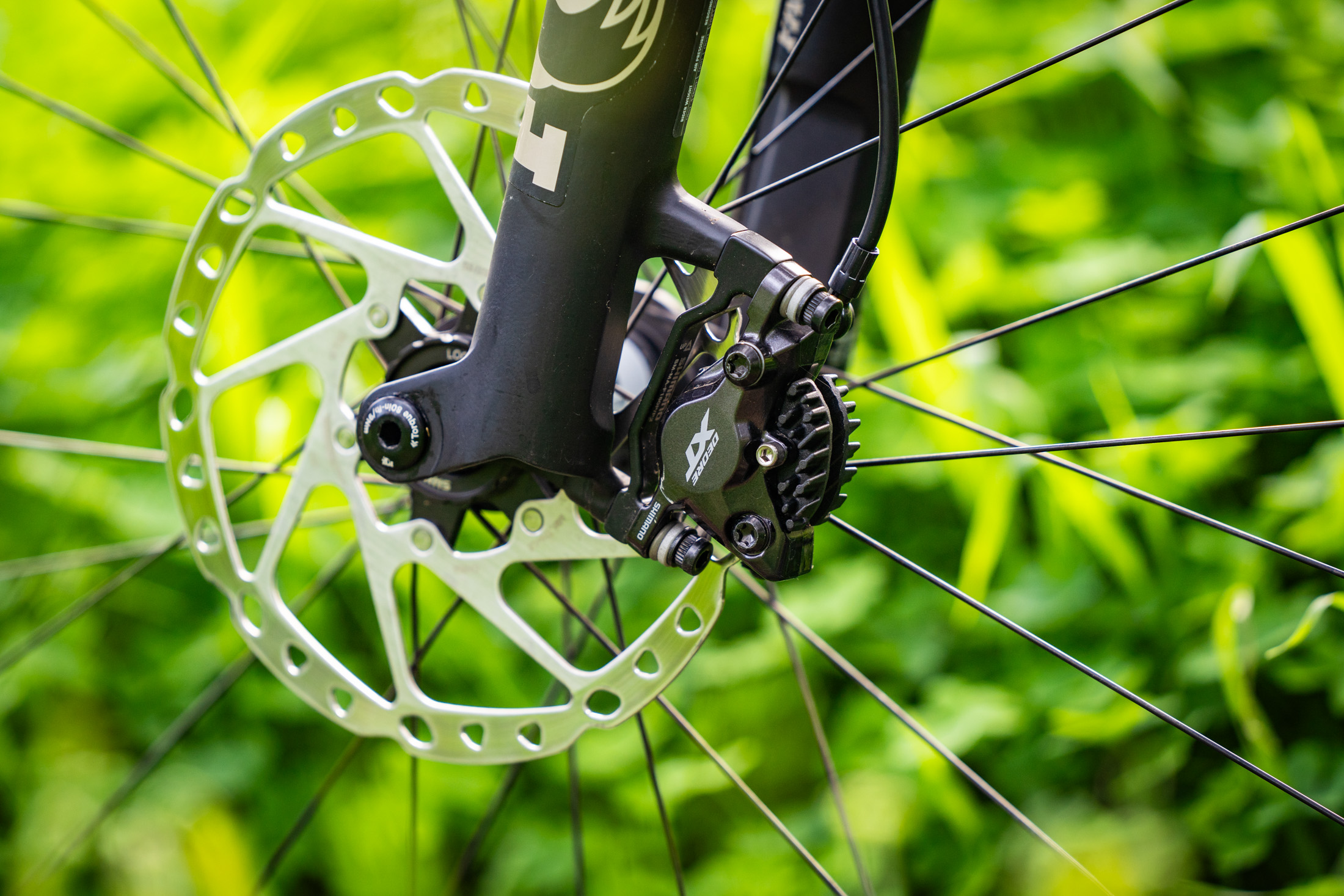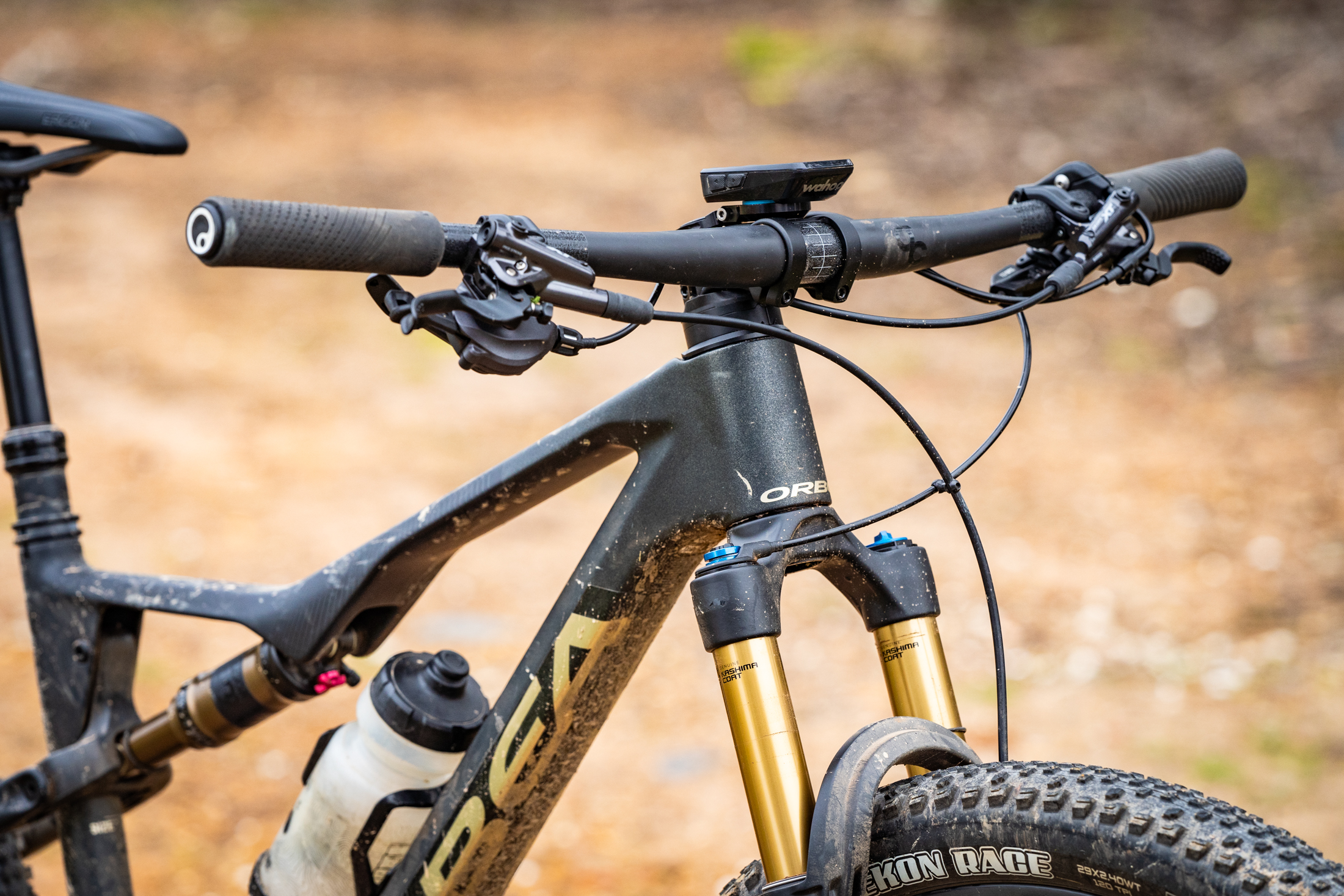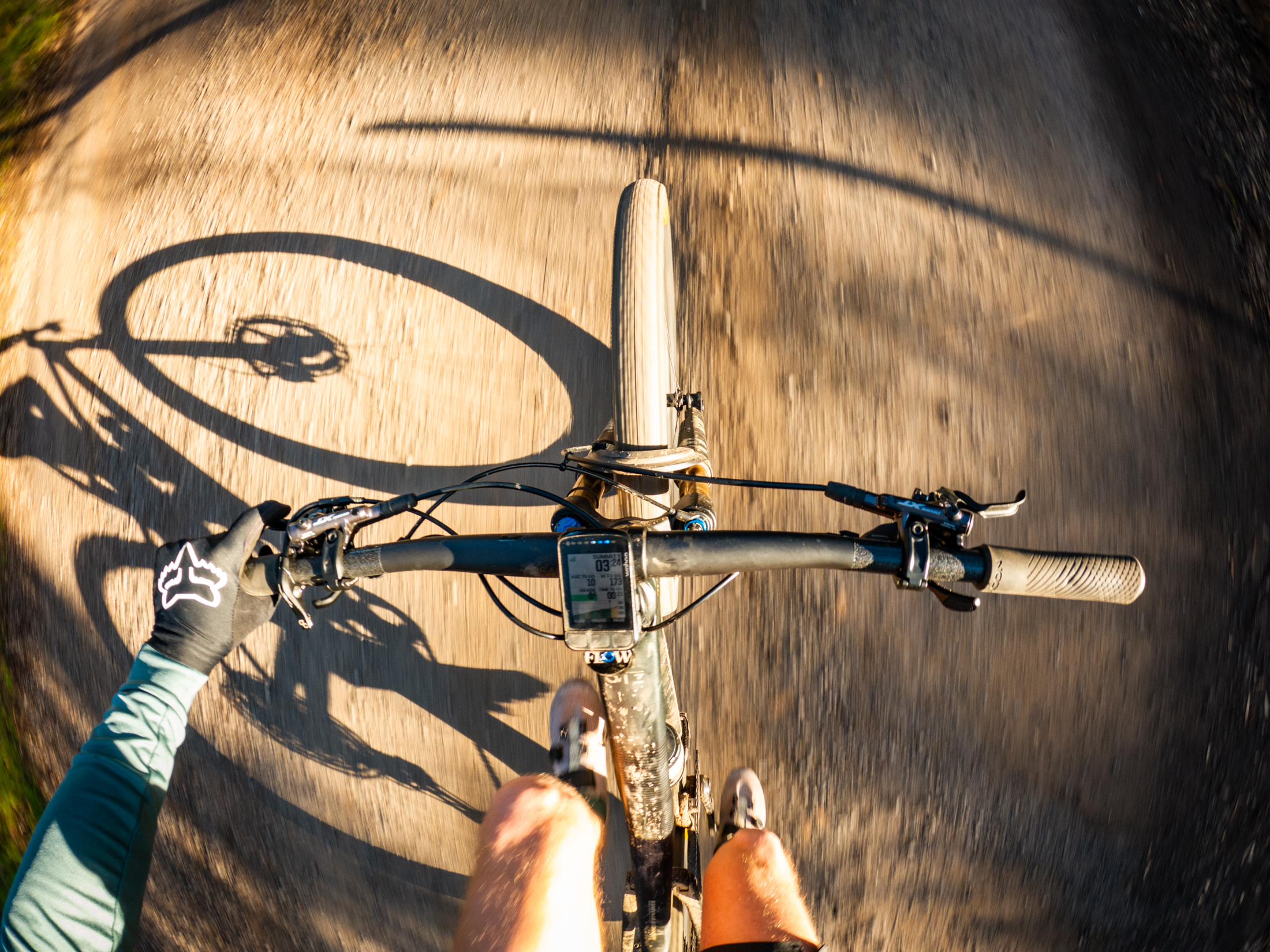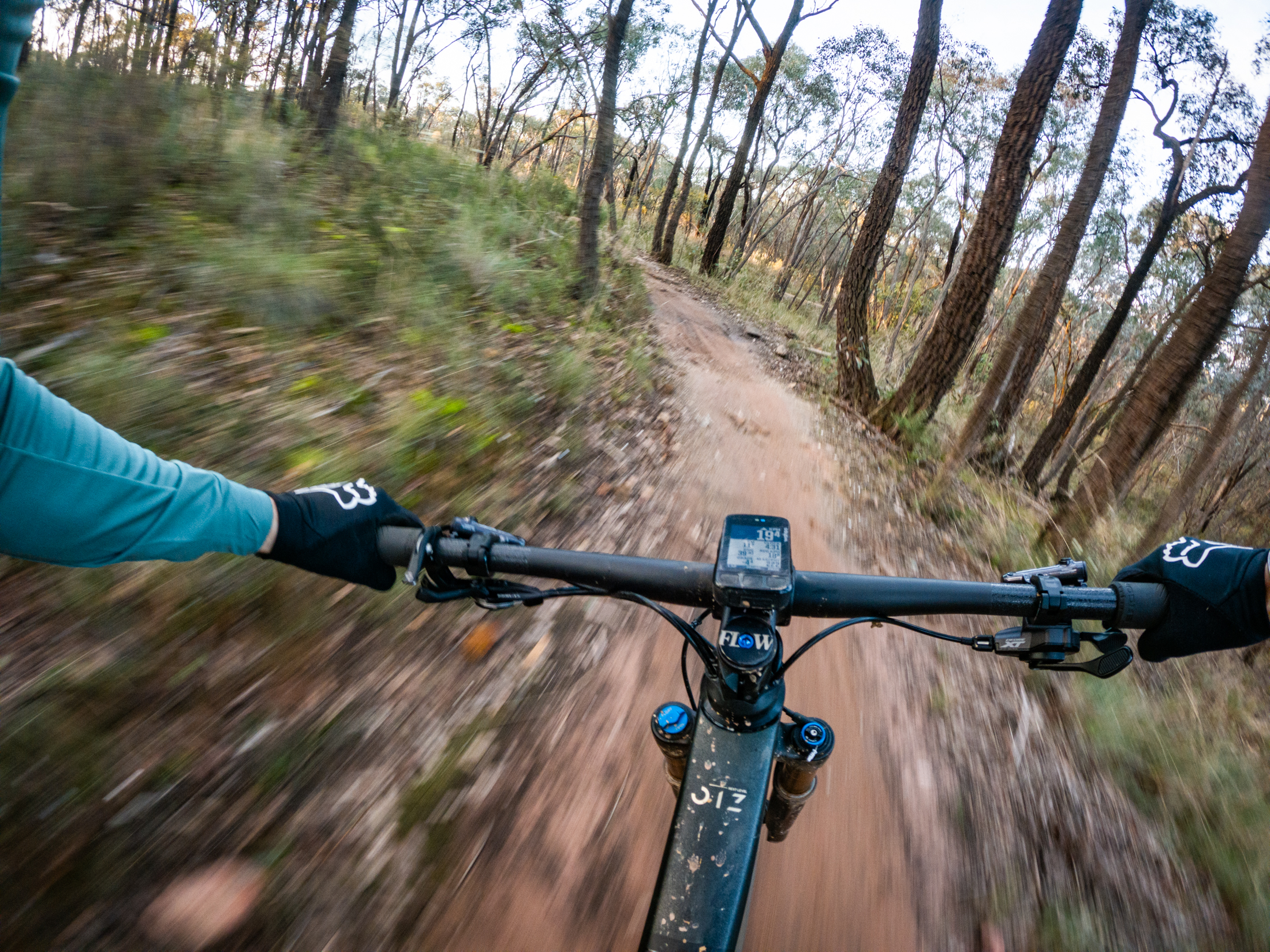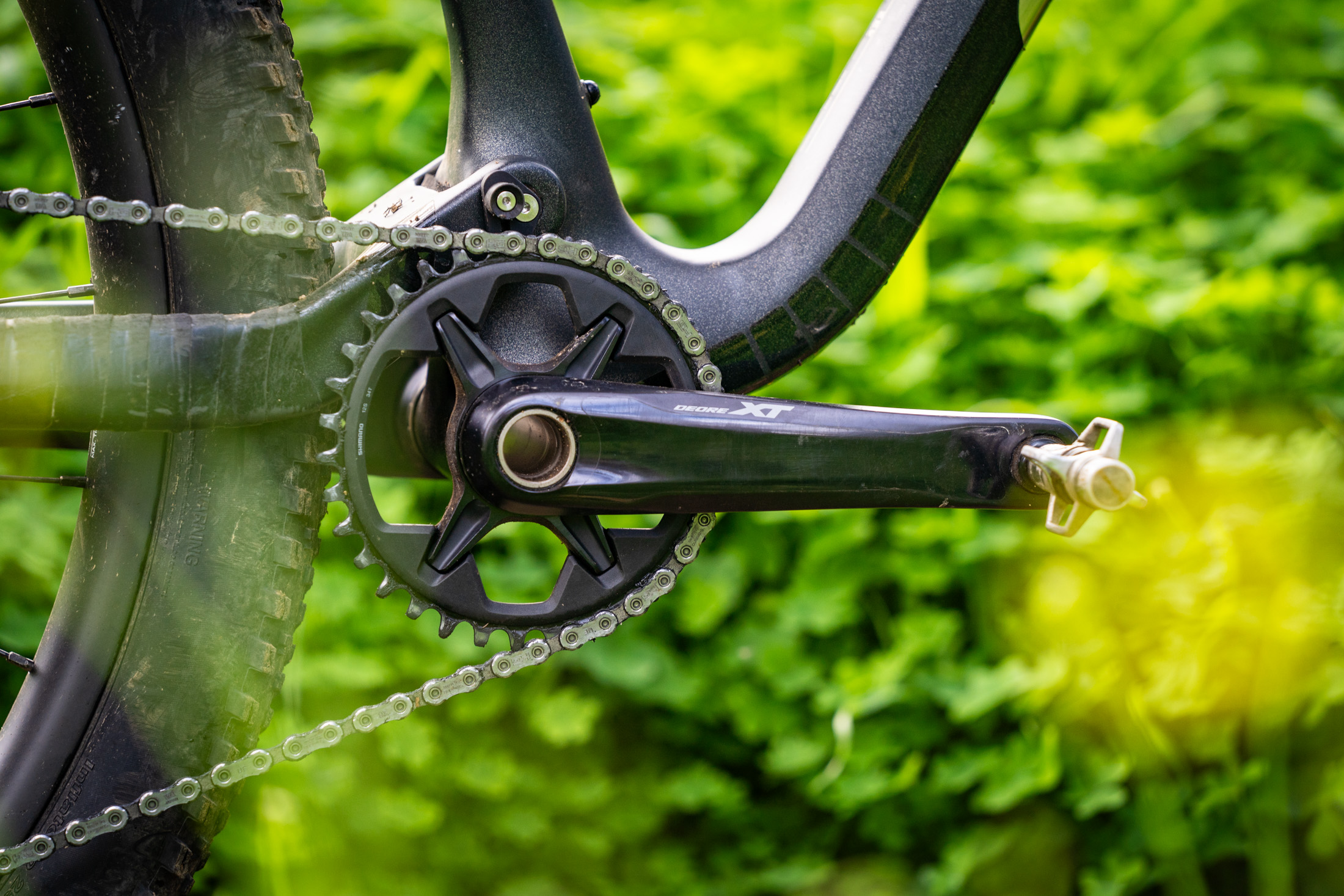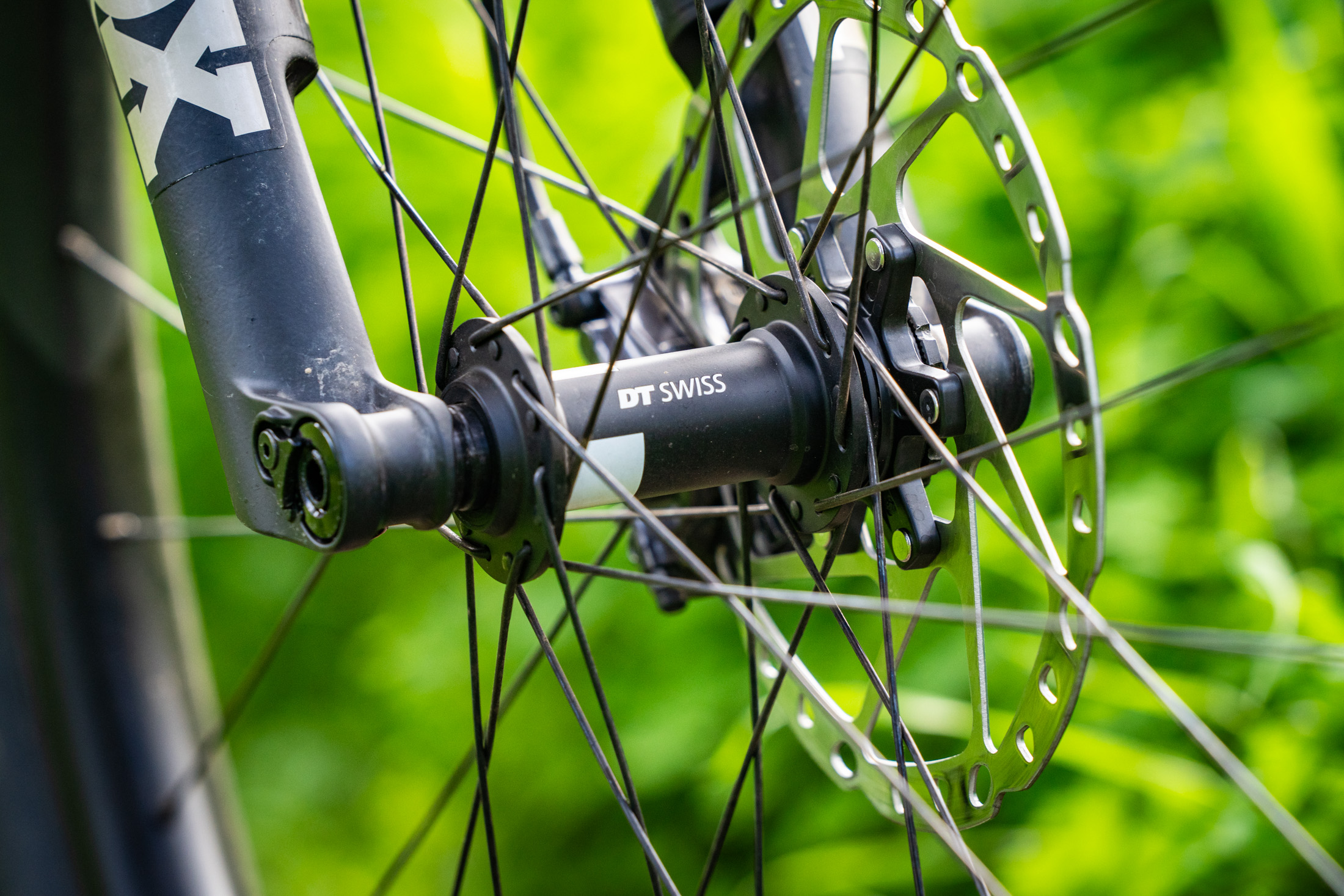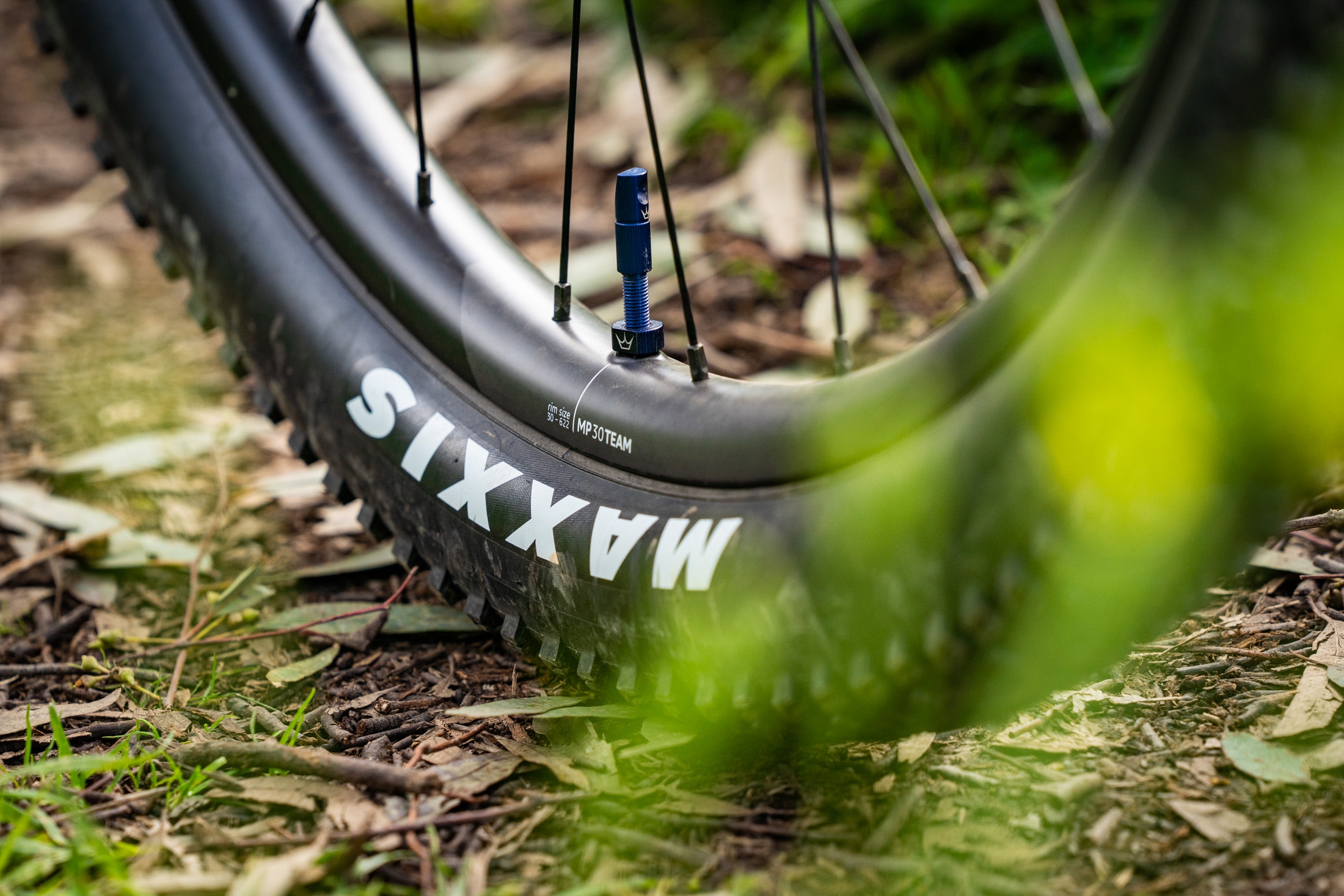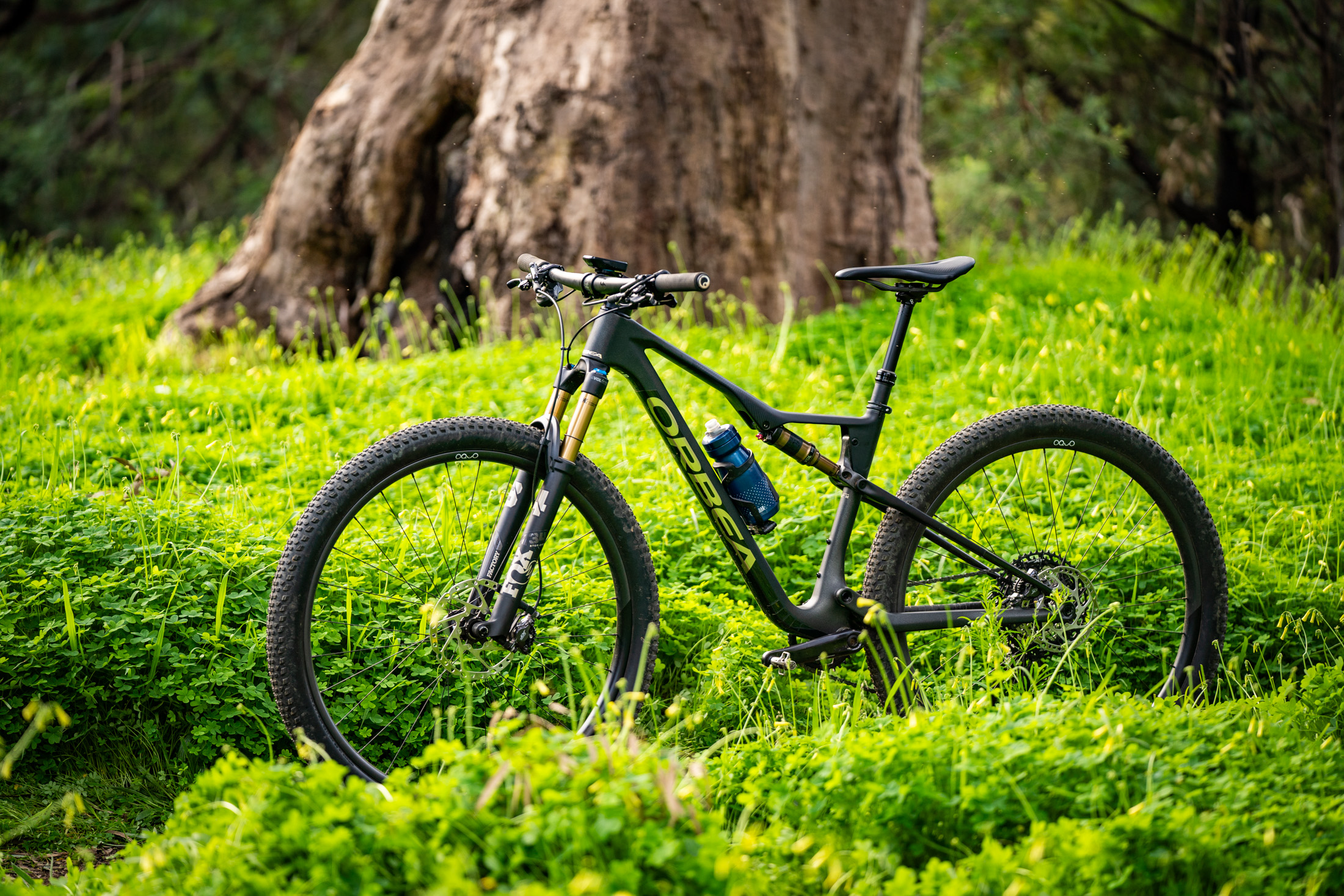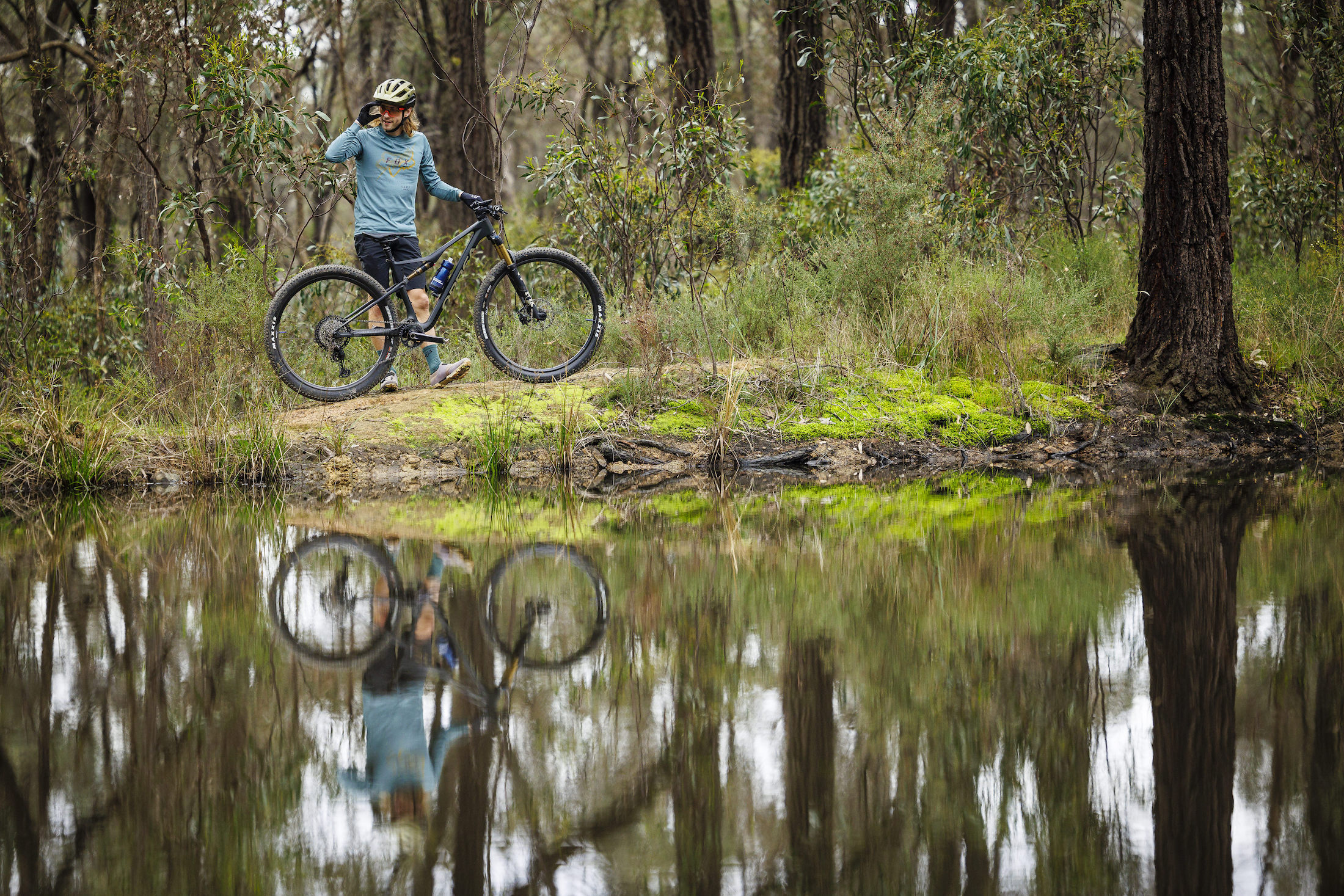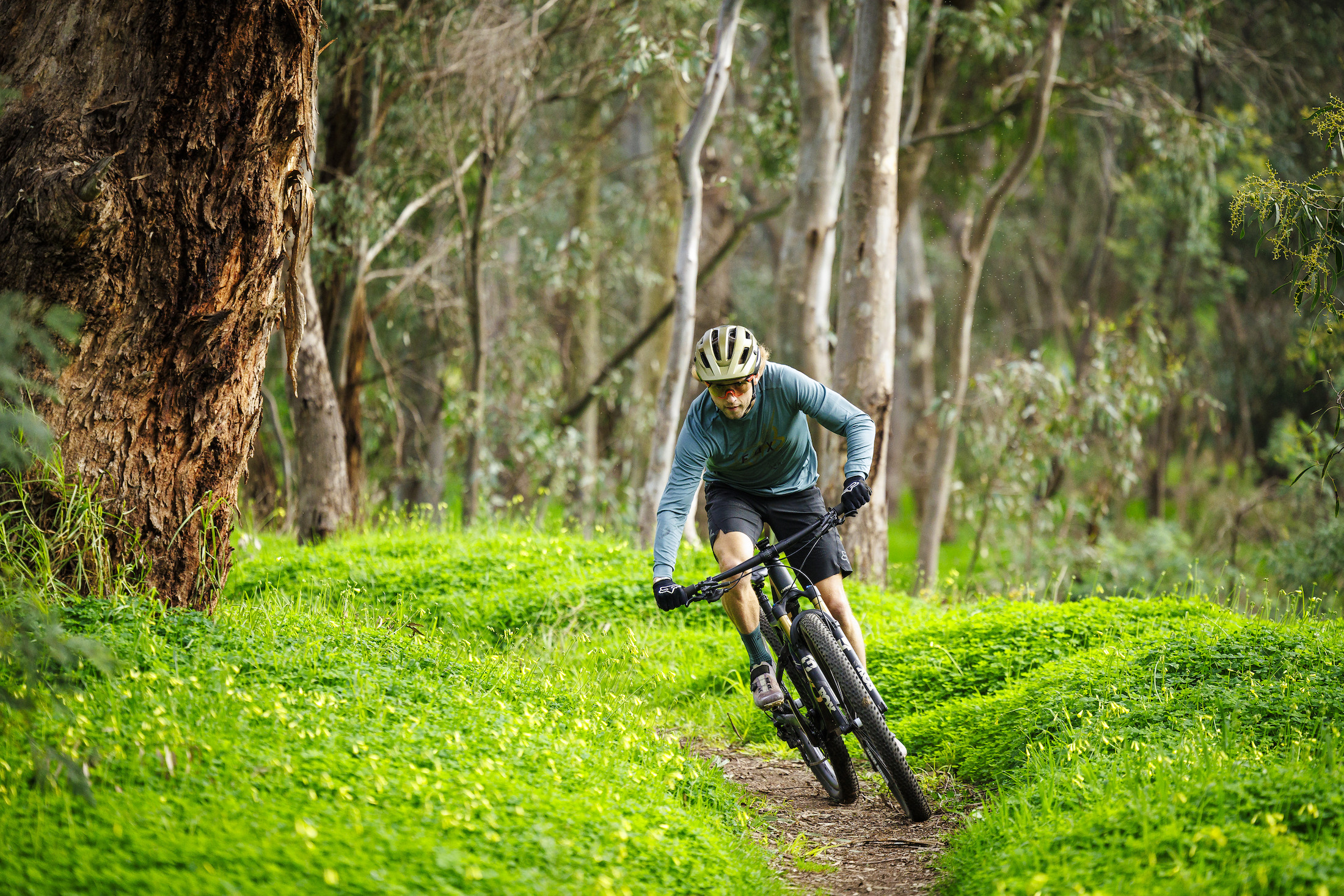Wil reviews the 2023 Orbea Oiz
It was back in 2020 when we last reviewed the Orbea Oiz. At the time the Oiz was offered in both 100mm travel XC and 120mm travel TR variants. That changes for 2023, with Orbea bringing the two together to develop what it believes is the ultimate contemporary XC race bike. Purpose-built around 120mm of travel, the latest Oiz debuts an all-new chassis that features updated geometry and some fresh bells and whistles. It certainly looks the goods, but is it enough to take the mantle of being the best XC bike on the market? I’ve been putting the Orbea Oiz through the wringer over the past few months to find out.
Watch our 2023 Orbea Oiz video review here:
This bike absolutely rips up technical XC trails, offering a plusher ride with more grip over rough terrain.
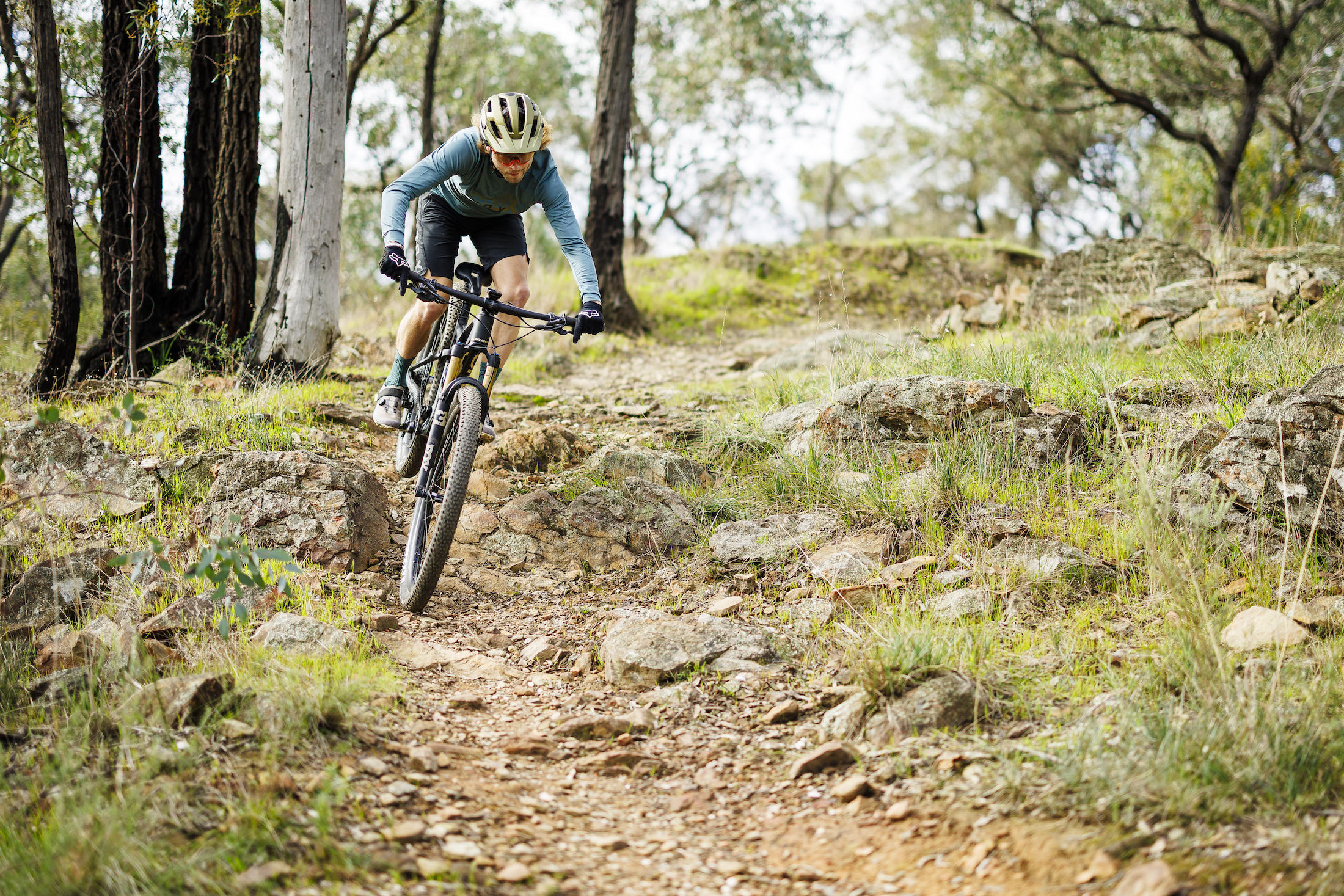
An overview of the 2023 Orbea Oiz
For 2023 the Orbea Oiz has undergone a ground-up redesign. It’s still Orbea’s flagship full suspension XC race bike, but it’s now equipped with 120mm of travel front and rear. That puts it into contention with other long-legged XC bikes such as the Scott Spark RC, the Specialized Epic EVO and the Pivot Mach 4 SL.
The latest Oiz frame is produced in three variants. There’s an alloy frame (Hydro) and two carbon frames (OMX and OMR). The top-end OMX frame is claimed to be one of the lightest on the market, weighing just 1,750g including the shock.
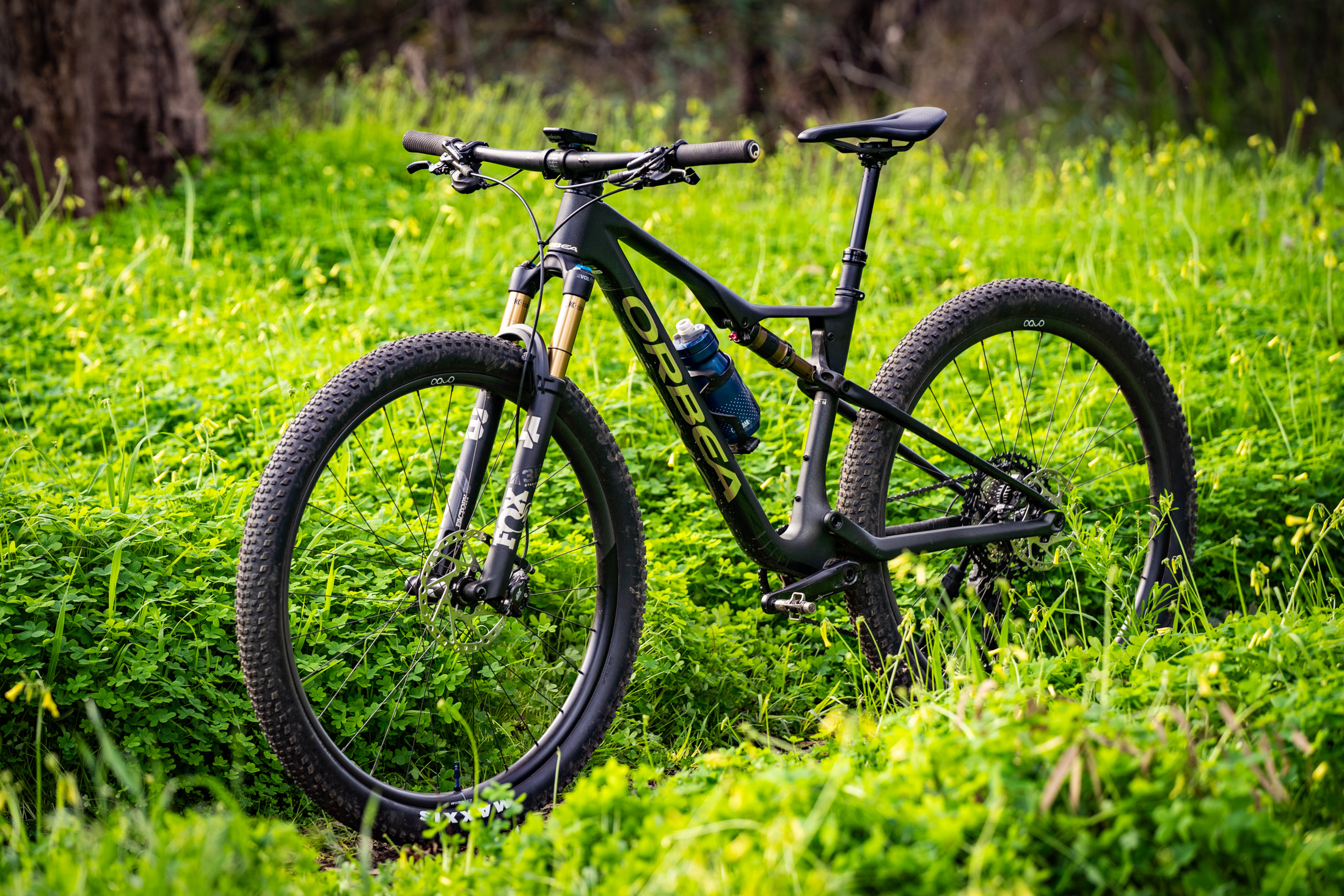
Regardless of material, all Oiz models are designed around the UFO single-pivot suspension platform. This sees a small degree of flex throughout the slender seatstays as the chunky Fiberlink compresses the shock. With the main pivot sitting above the chainring, there’s a high amount of anti-squat to maximise pedalling efficiency.
Both the fork and shock are cabled up to the Squidlock remote that allows you to cycle between Open, Medium and Lockout settings on-the-fly.
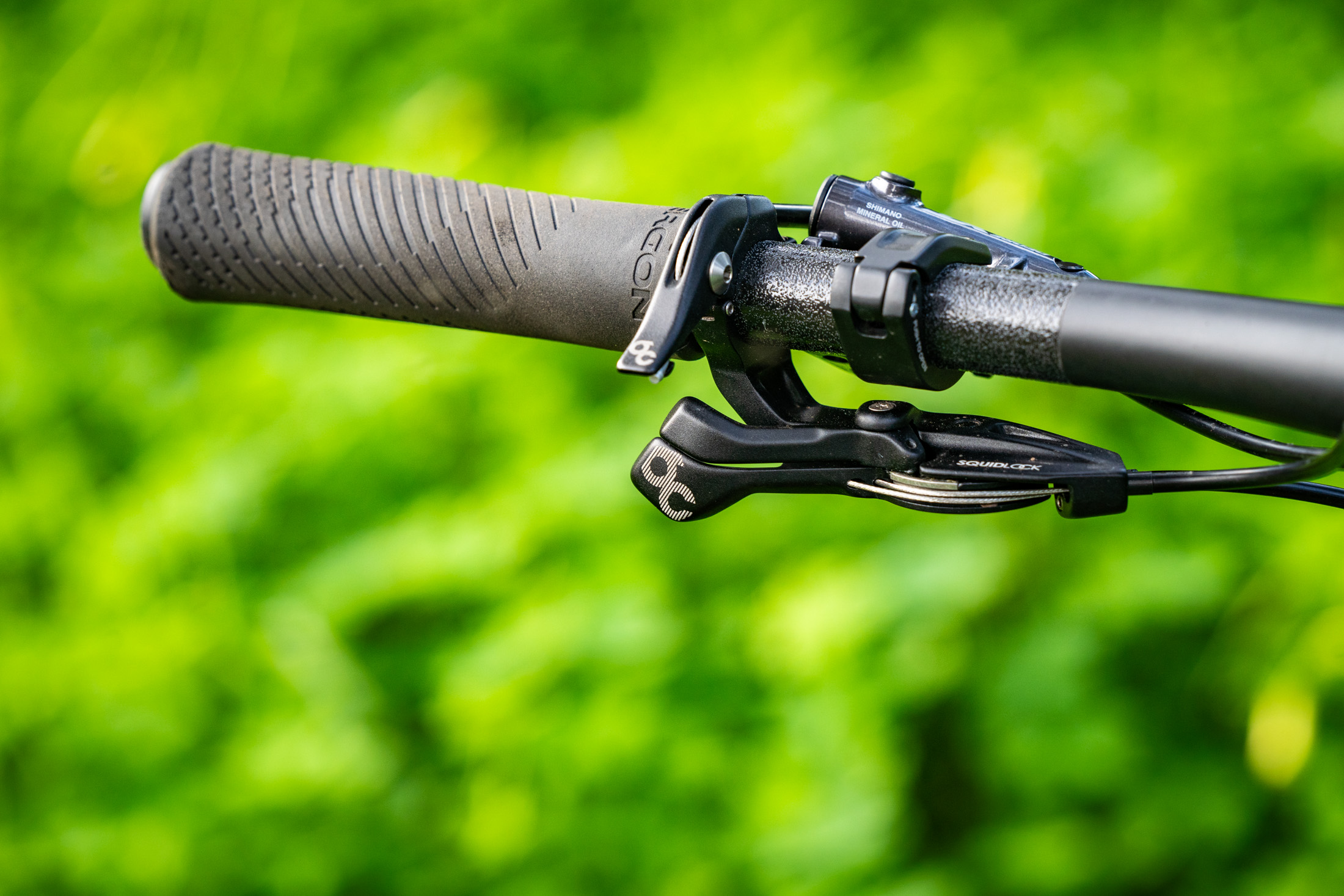
Geometry & size chart
With the Orbea Oiz no longer having to perform double-duty with both 100 and 120mm travel variations, the geometry has been optimised and brought right up to date.
The head angle has slackened out to 67° and the seat angle has steepened to 76.5°. Reach measurements have grown across the board, though the rear centre length remains quite short at 432mm. The BB also sits low for a 120mm travel bike, with a 42mm drop between the hub axles.
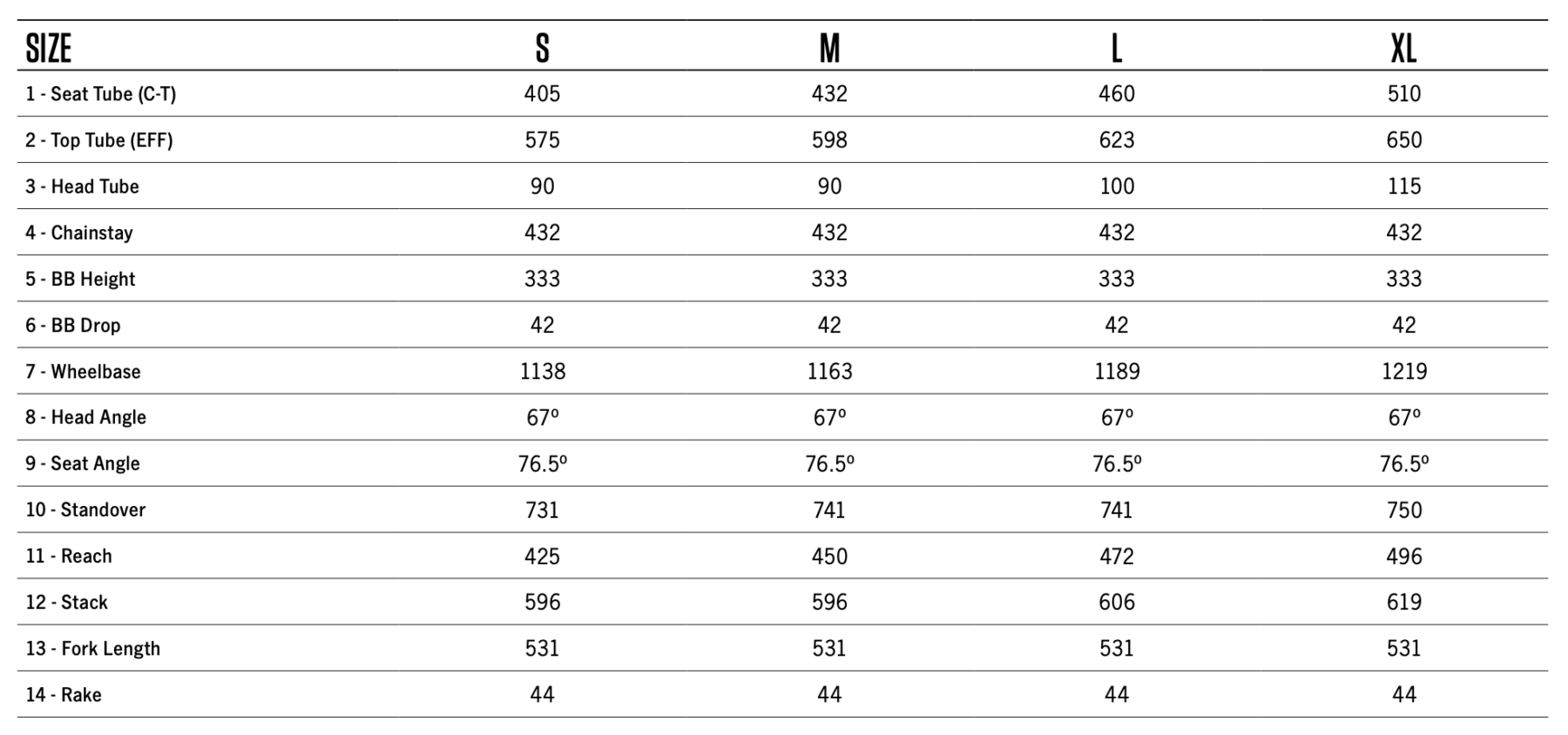
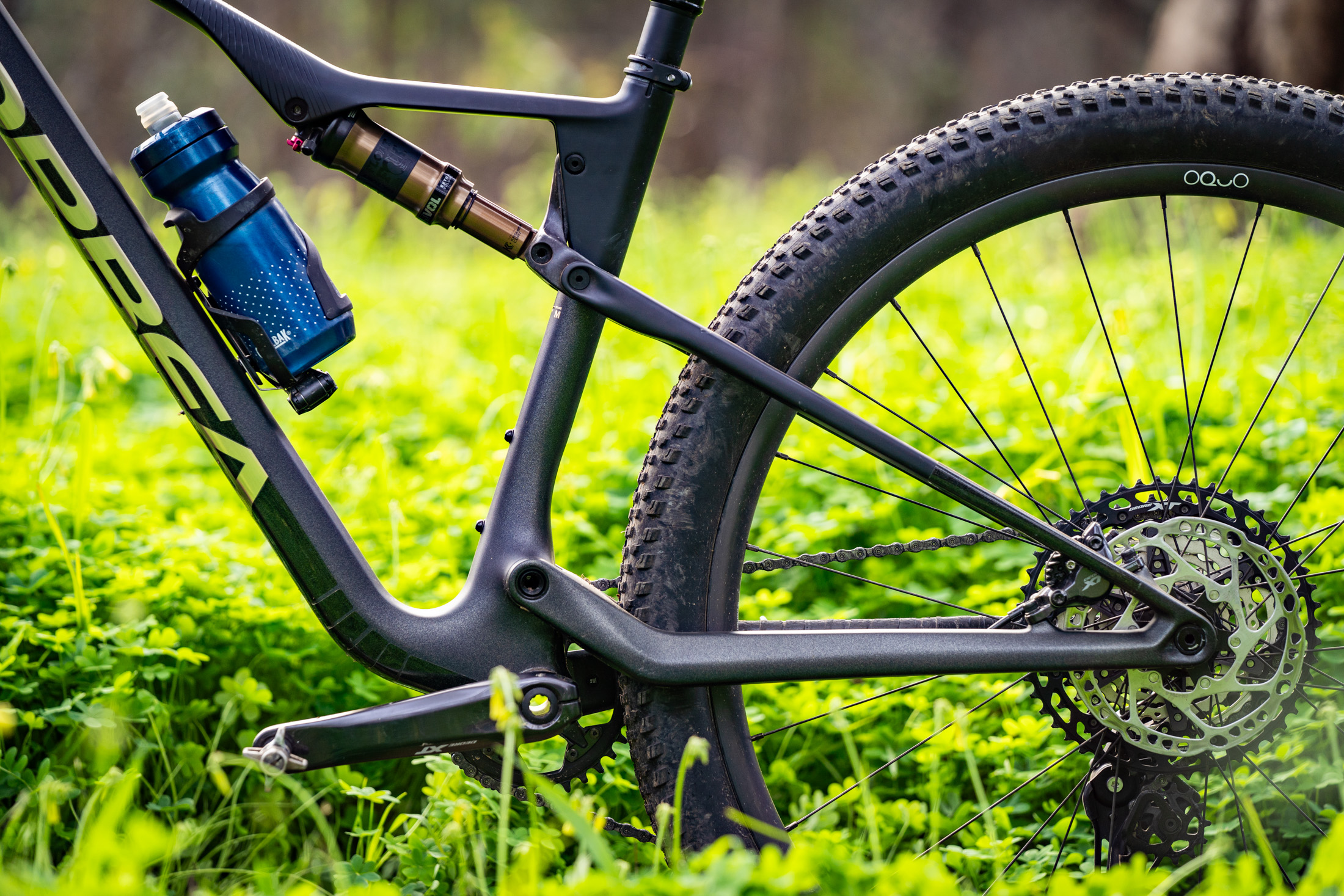
2023 Orbea Oiz price & specs
With three different frames on offer, there are no fewer than 11 spec options across the Orbea Oiz lineup for 2023. For the specs and prices of all of those models, check out our first look article.
Prices start at $4,699 AUD for the Oiz H30, which is pretty accessible for an XC race bike. We’re stoked to see Orbea producing an alloy frame, especially when most brands are carbon-only when it comes to their XC models.
The bike that I’ve been testing is the Orbea Oiz M10, which sits in the middle of the lineup.
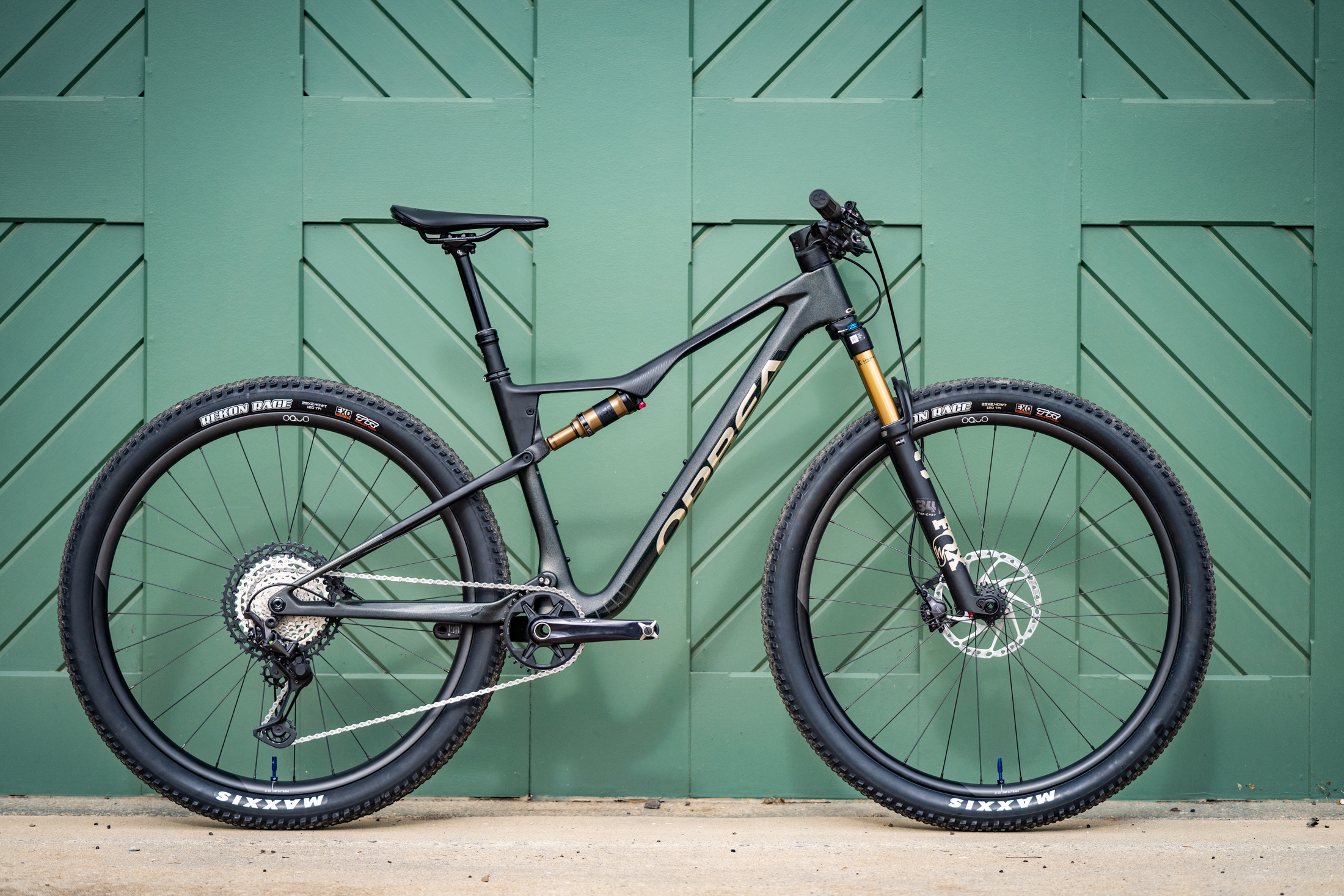
2023 Orbea Oiz M10
- Frame | OMR Carbon, UFO Single-Pivot Flex Stay Suspension Design, 120mm Travel
- Fork | Fox 34 Step-Cast, Factory Series, FIT4 Damper w/3-Position Squidlock, 44mm Offset, 120mm Travel
- Shock | Fox Float DPS, Factory Series, I-Line w/3-Position Squidlock, 190x45mm
- Wheels | Oquo MP30Team, Carbon Rims, 30mm Inner Width
- Tyres | Maxxis Rekon Race EXO 2.4in Front & Rear
- Drivetrain | Shimano XT 1×12 w/32T XT Crankset & 10-51T Cassette
- Brakes | Shimano XT 2-Piston w/180mm Front & 160mm Rear Rotors
- Bar | OC MP10 Carbon, 760mm Width
- Stem | OC MP21 Alloy, Length: 60mm (S), 75mm (M-L), 90mm (XL)
- Seatpost | OC MC20, 31.6mm Diameter, Travel: 125mm (S-M), 150mm (L-XL)
- Saddle | Fizik Taiga S-Alloy
- Confirmed Weight | 11.57kg
- RRP | $9,499 AUD
It’s quite brawny given its sub-12kg weight, putting it into a similar pool as the latest Spark and Anthem.
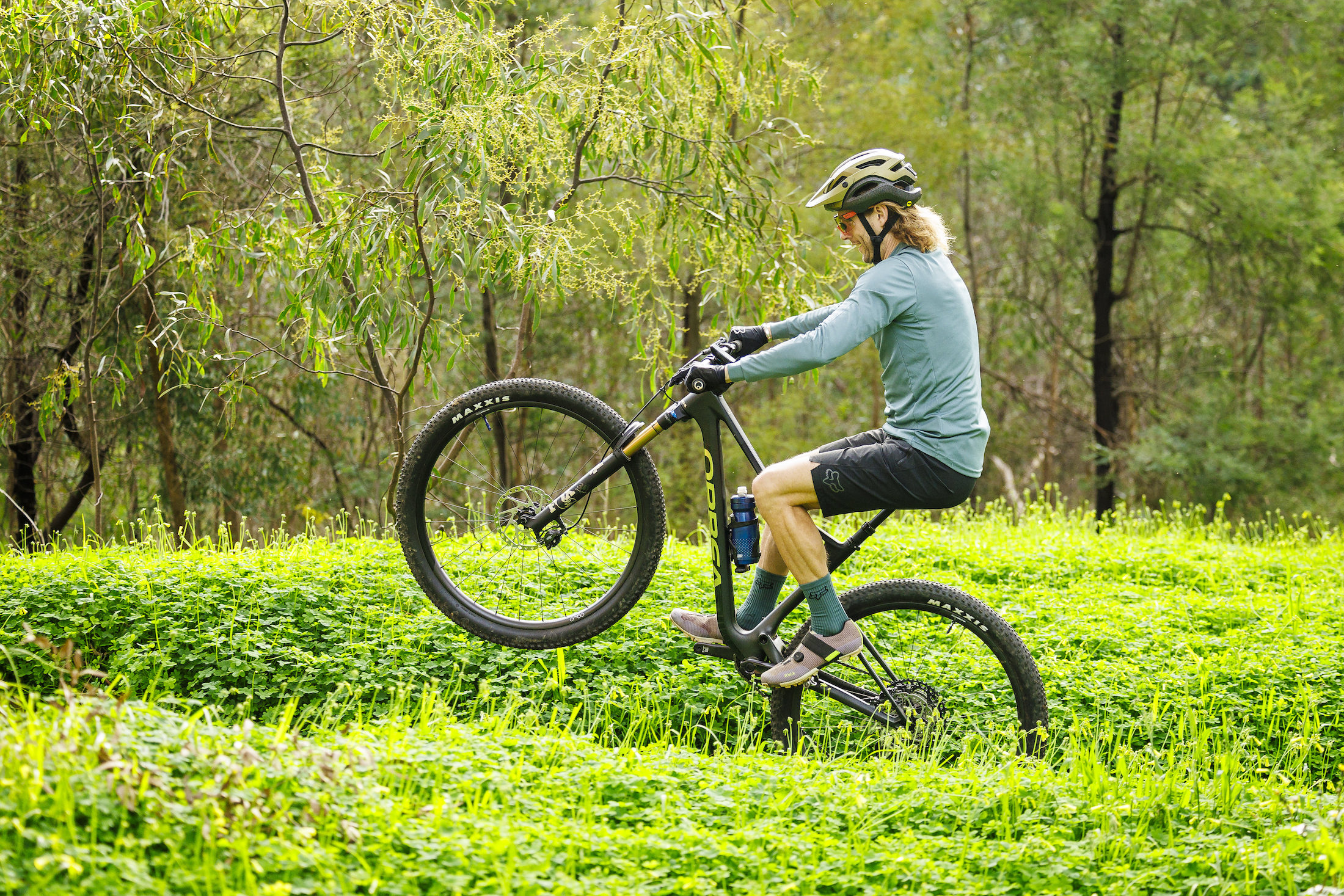
Orbea Oiz sizing & fit
At 175cm tall I’ve been testing a Medium size in the Orbea Oiz, and I have to say that the overall fit and geometry on this bike are superb.
I initially thought the steep seat angle and 120mm travel fork would perch me up high over the bike, though the generous reach and low BB means you end up sitting centrally within the cockpit and nicely tucked in between the wheels. Orbea has designed the upper headset to sit within a recess in the head tube, and along with the angled stem and flat handlebar, your weight is naturally positioned forward and low.
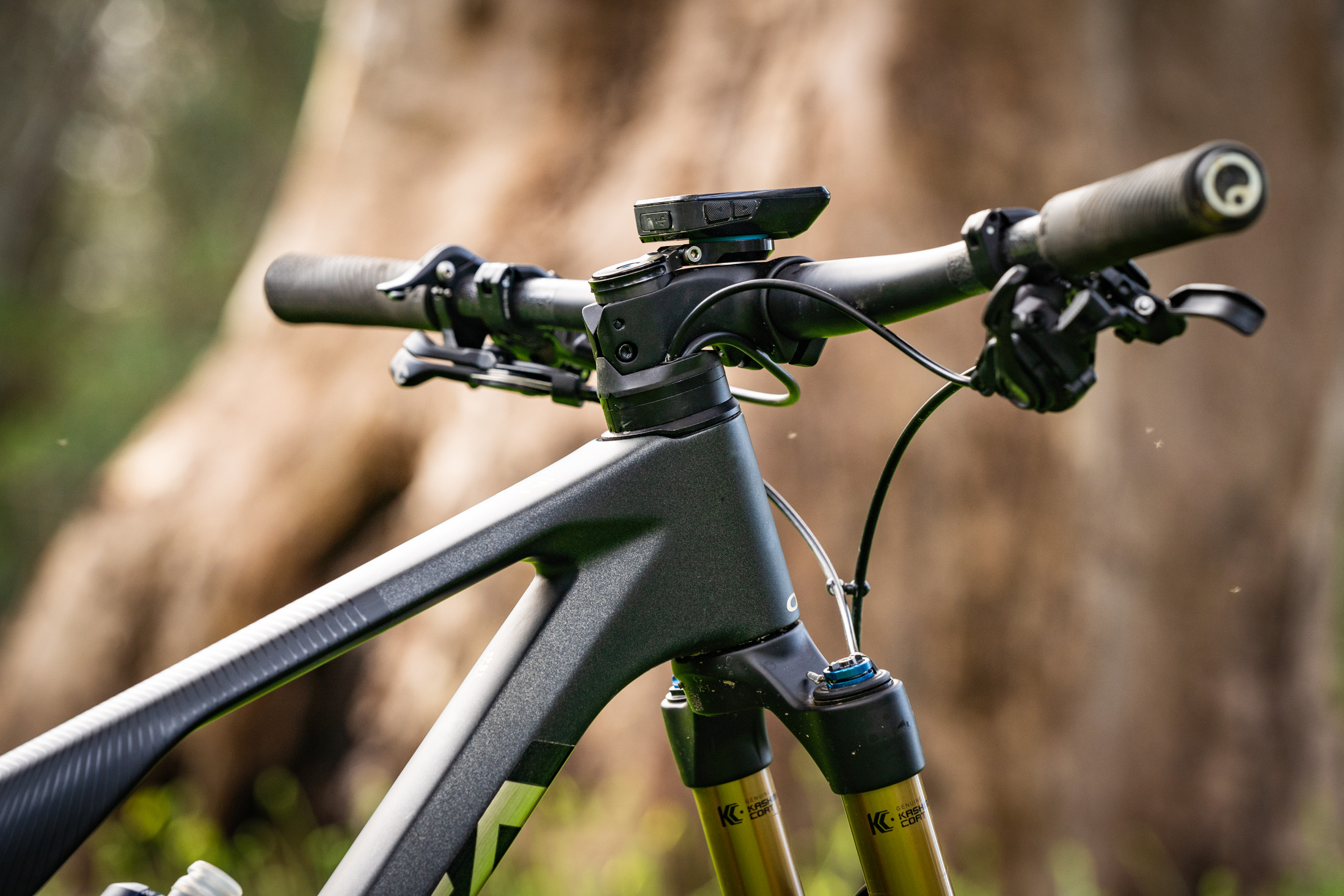
It’s good to see a decent amount of spacers under the stem for dialling in your grip height. I lowered the stem down 10mm, which is an awkward process since the cables pass through the split two-piece spacers as well as the upper headset assembly. The specially-shaped spacers won’t fit above the stem, so you’ll need to use standard round spacers unless you decide to cut the fork steerer down.
For those who are especially limber, Orbea offers a specific low-stack upper headset cap that allows you to slam the stem as low as possible.
As for contact points, I really didn’t get along with stock Fizik saddle and the thick lock-on grips. After a couple of rides I changed those for an Ergon SR Pro saddle and smaller diameter GXR push-on grips to improve comfort while also dropping some weight.
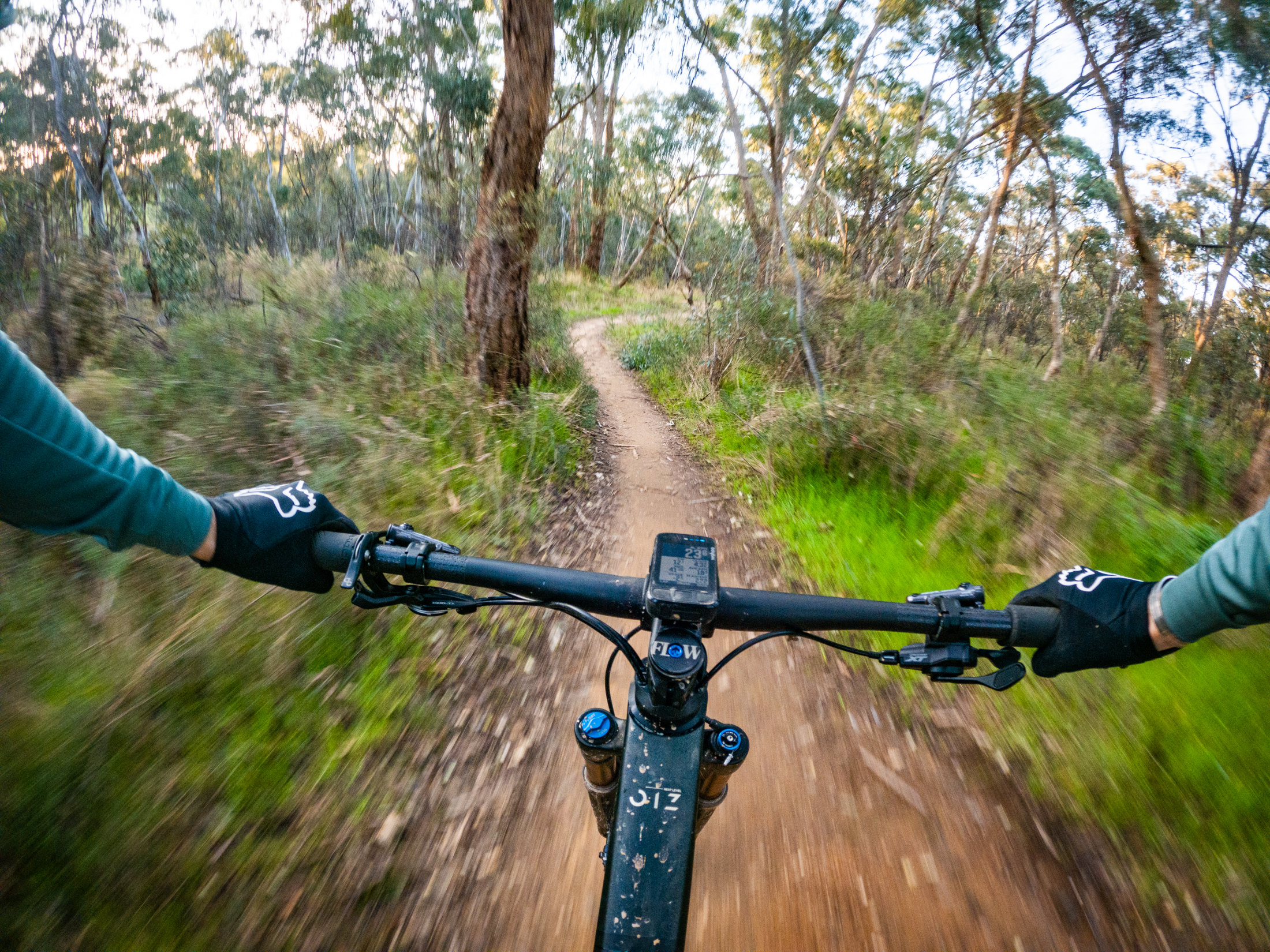
Suspension & tyre setup
The Orbea Oiz comes with a hugely detailed manual that covers technical specifications, spare parts and suspension setup, which is fantastic to see. The manual recommends setting up the shock with 20-25% sag, and Orbea even provides suggested pressures and rebound settings to get you started.
I found the air pressure recommendations to be spot-on. To support my 67kg riding weight I needed 160psi in the Fox Float DPS shock, which put me right around 22% sag. The suggested rebound setting was too fast for my liking, so I ended up slowing it down until I was just one click faster than halfway at 8/14 clicks.
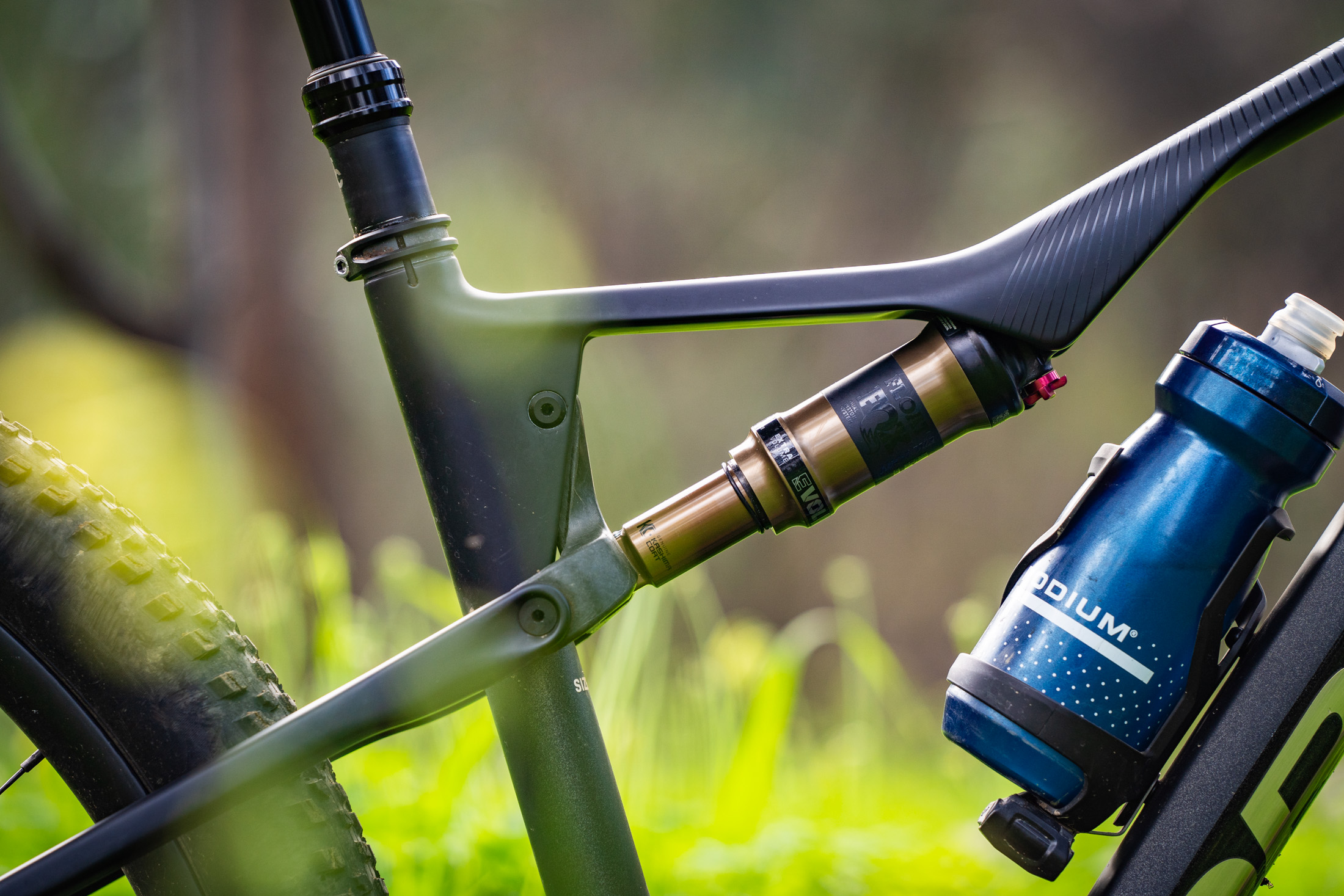
Orbea has spec’d a medium compression and rebound tune for the Oiz’s shock. There are no volume spacers inside the air can, and Fox doesn’t recommend fitting any in this particular size. This is because the shock already has quite a small air volume, so it ramps up a lot towards the end of the stroke.
I set up the Fox 34 Step-Cast fork as per usual with a single volume spacer and 72psi in the air spring, with the rebound damping halfway at 10/20 clicks.
I’m a big fan of the 2.4in Maxxis Rekon Race tyres, which plump up nicely on the 30mm wide carbon rims. I fitted a CushCore XC insert into the rear wheel and ran tyre pressures at 20-22psi up front and 22-24psi at the rear.
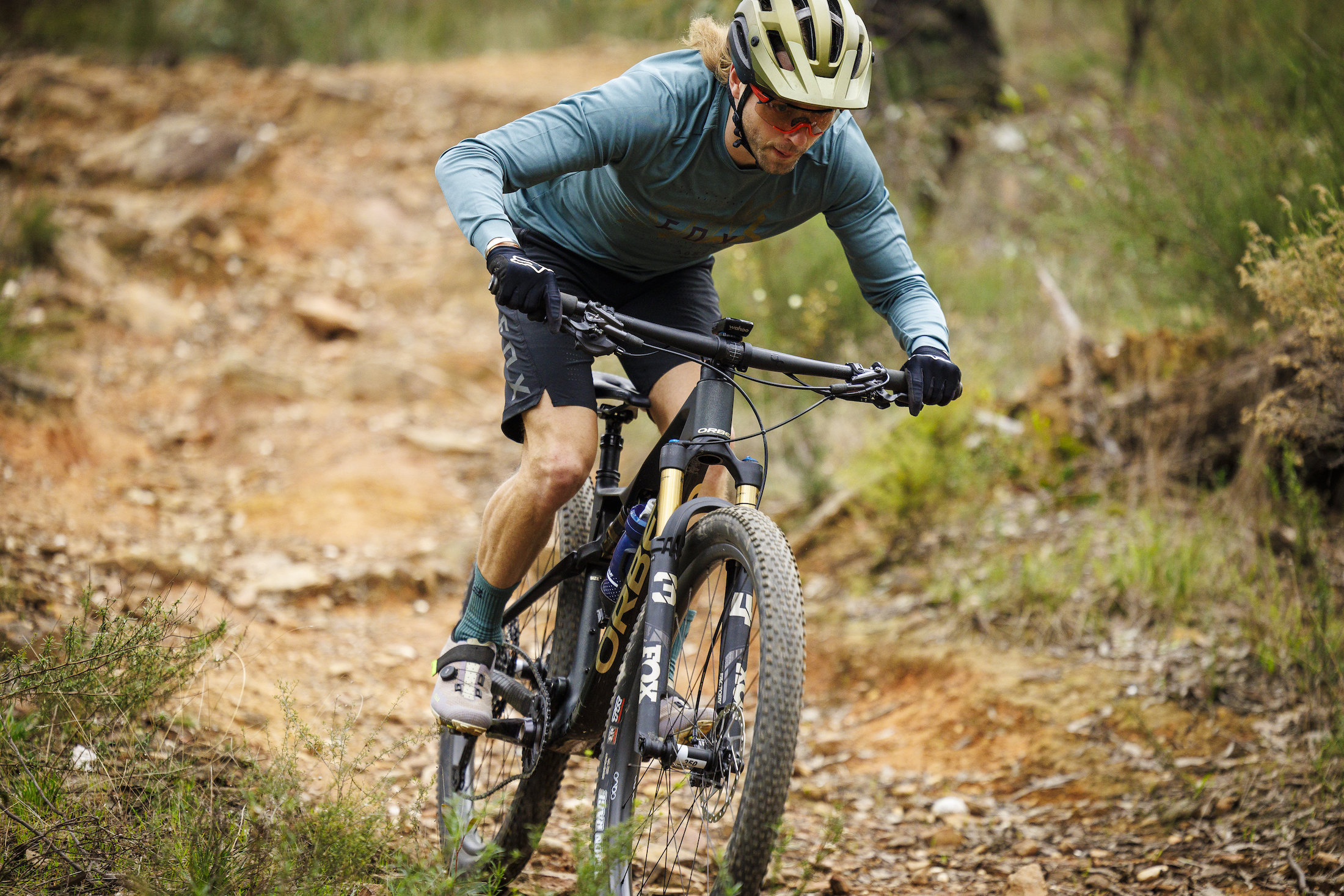
Orbea Oiz weight
Our Orbea Oiz M10 test bike weighed in at 11.57kg without pedals and with the tyres set up tubeless.
That’s pretty decent given the spec, especially since the stock dropper is on the heavy side (541g confirmed). The Oquo wheels also came in heavier than claimed (1,616g including tubeless tape and valves), and the Maxxis Rekon Race tyres aren’t the lightest either (840g each).
It’s worth pointing out that the Oiz M10 that I’ve been testing makes use of the cheaper OMR carbon frame. While the overall shape and geometry are identical, the use of lower modulus carbon fibre results in a 200g weight penalty over the OMX frame that you’ll find on the more expensive Oiz models.
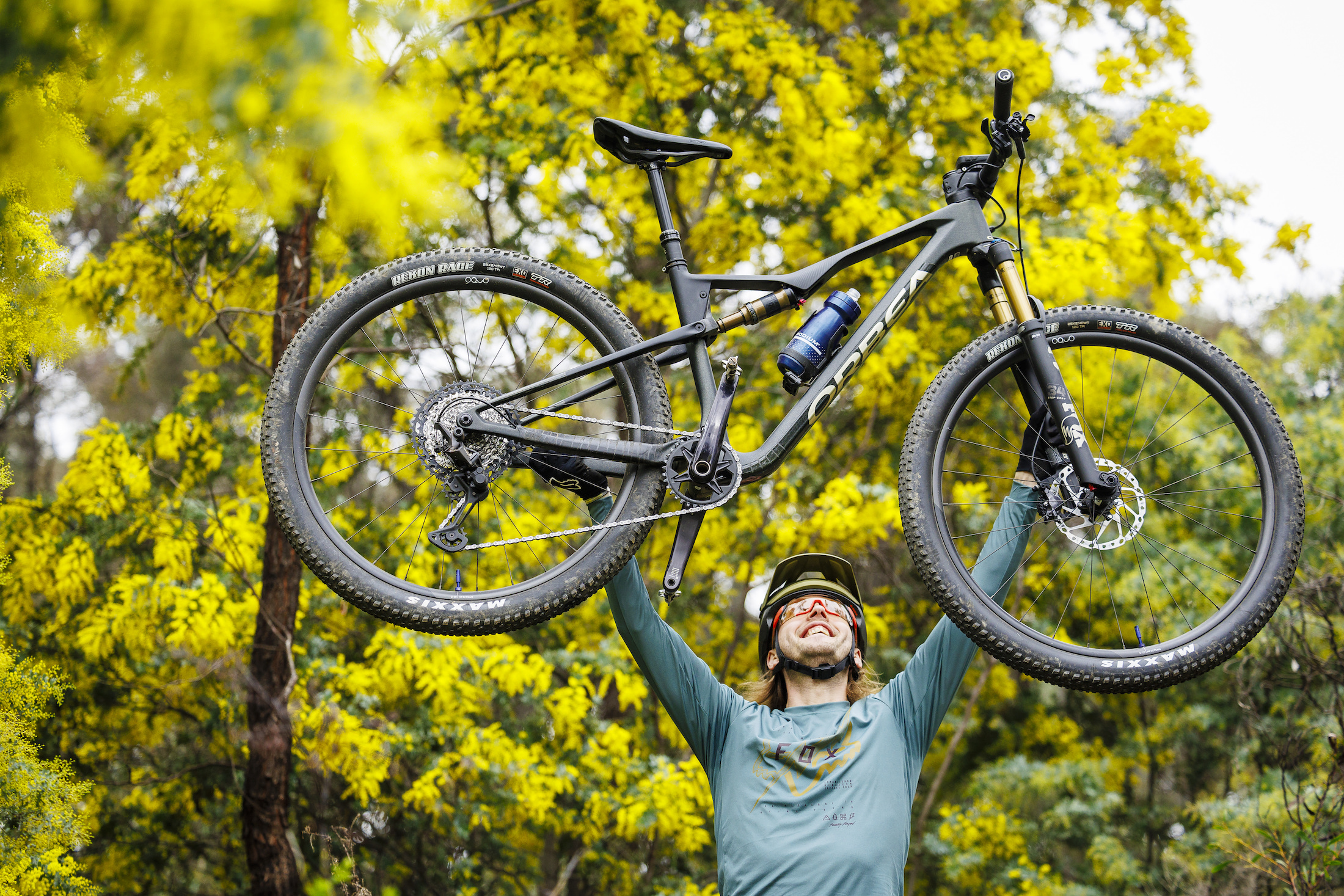
For those wondering, here’s how the claimed weights compare between the three Oiz frames (including the shock, derailleur hanger and chainstay protector);
- OMX Frame – 1,798g
- OMR Frame – 1,998g
- Hydro Frame – 2,798g
Indeed that top-end OMX frame is impressively svelte, though it isn’t quite the lightest XC bike on the market. If you’re curious to see how it shapes up alongside the Giant Anthem, Specialized Epic World Cup and Trek Supercaliber, see our first look article for a detailed comparison.
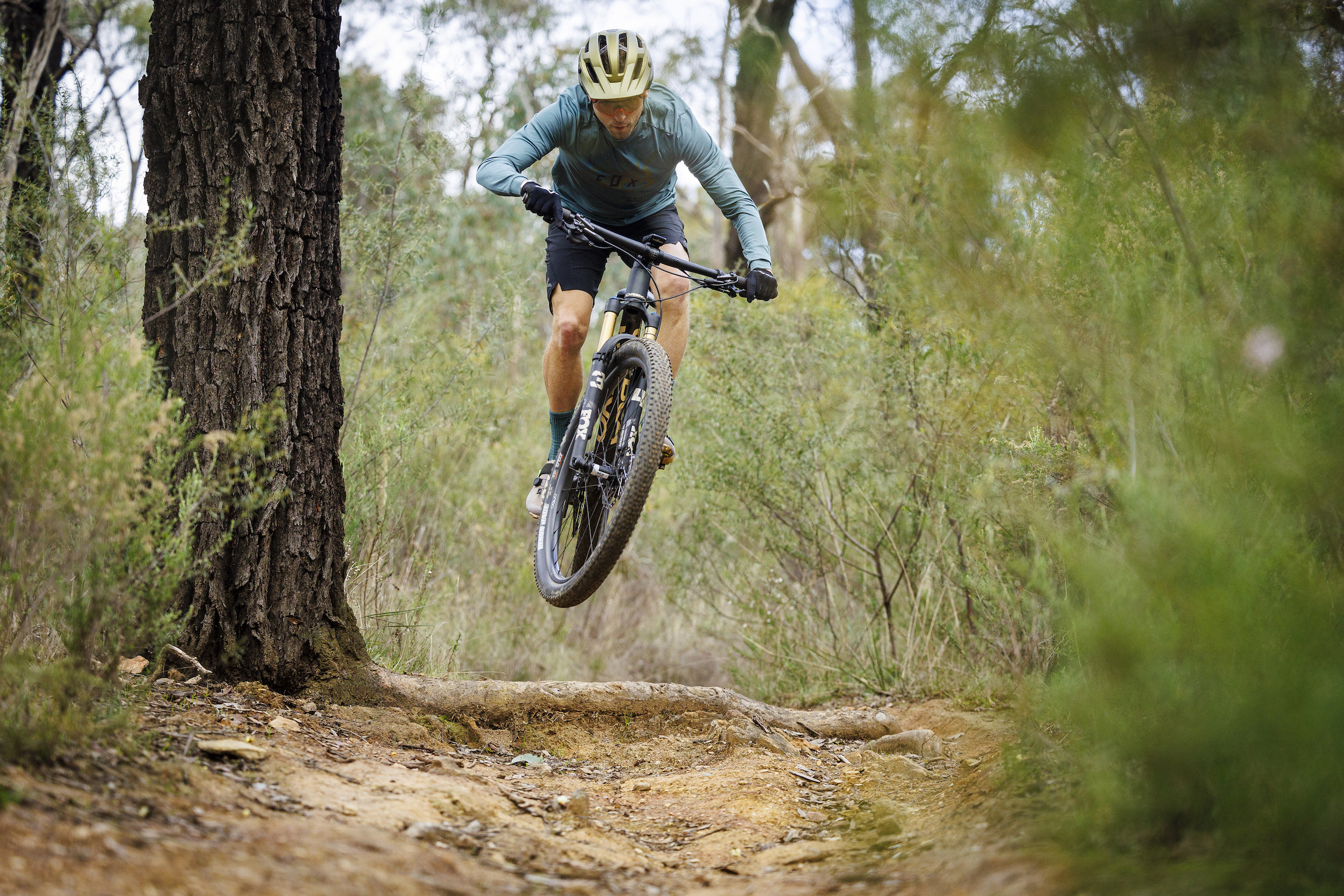
What do we dig about the Orbea Oiz?
No doubt about it, the 2023 Orbea Oiz is a terrific example of a modern XC bike.
I spent a lot of time on the previous version, which I thoroughly enjoyed thanks to its sharp handling and remote-adjustable suspension. The new version carries much of that over while bringing about some welcome improvements.
For a start, the increase in travel means the suspension is considerably smoother and deeper. Much like the Scott Spark RC, the Oiz is plush for an XC bike. There’s heaps of grip and control over rough and rocky terrain, with the rear wheel quickly getting out of the way when needed.
I’ve been able to use full travel comfortably, with the rear end providing plenty of cushioning and support for soaking up bigger impacts. I only managed to bottom out the shock once throughout testing (it was a particularly ugly huck-to-flat), which goes to show that Orbea has dialled in the relationship between the regressive leverage ratio and the small-volume shock.
With 120mm of travel at your disposal, the Oiz affords a greater margin for error that allows you to push it quite hard on the descents.
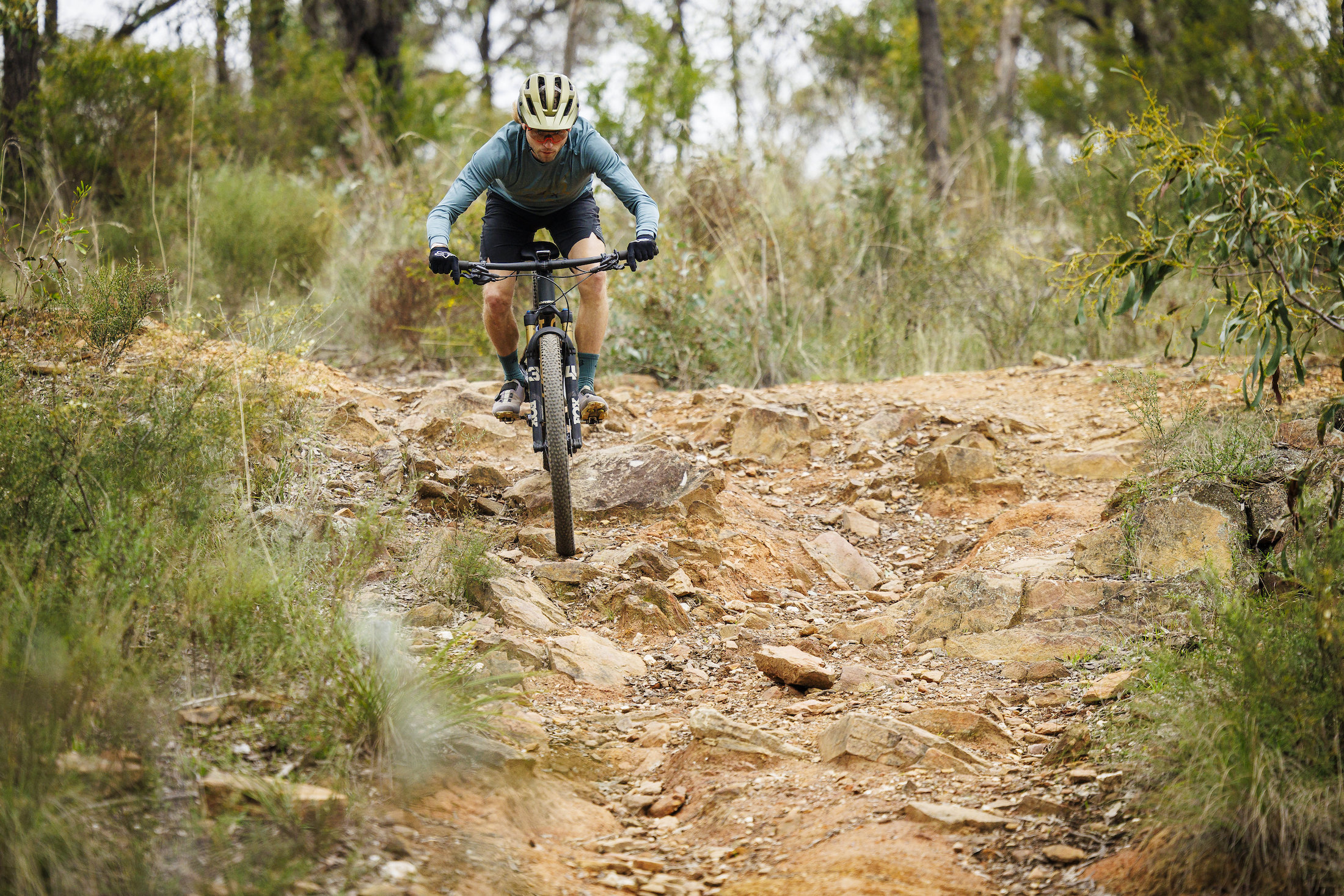
Stability in spades
The contemporary geometry also plays a strong role in the Orbea Oiz’ confidence-inspiring stance, with the low BB and long wheelbase placing you very much in-the-bike.
The raked-out front centre does require you to actively weight the grips in order to keep the front-end sticking. I was caught out a couple of times during the first few rides where I’d occasionally feel the front tyre drifting through a dusty hard-packed berm.
It’s easy to build trust with the bike though. There’s loads of damping and grip from the Rekon Race tyres, and the supple Fox 34 SC fork tracks the terrain closely. Much like a modern trail bike, you’ll benefit from straightening your knees and bending your elbows to get your chest further over the stem on the descents.
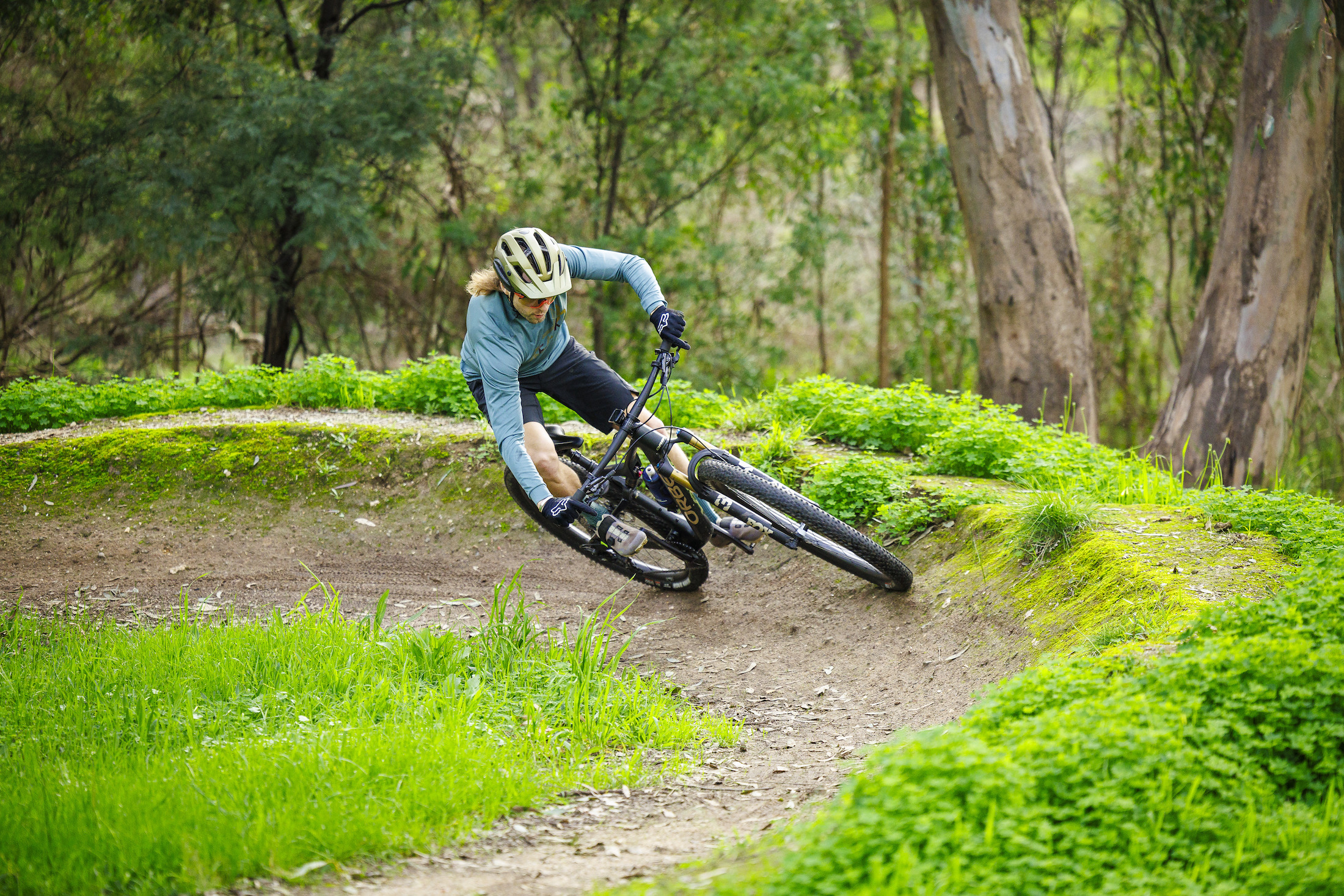
This tweak in riding position proved to be a bit of a revelation for me. As well as improving front-end grip, I found it helped to reduce leg fatigue as I wasn’t squatting down so much like I would on a less planted and shorter travel bike.
Indeed the Oiz offers a very comfortable and calm ride quality on rowdy trails. It’s quite brawny given its sub-12kg weight, putting it into a similar pool as the latest Spark and Anthem.
Powerful pedalling
It isn’t just about the descents with the new Orbea Oiz however. This is still a very fast bike on the climbs too thanks to its efficient pedalling manners and remote-adjustable suspension.
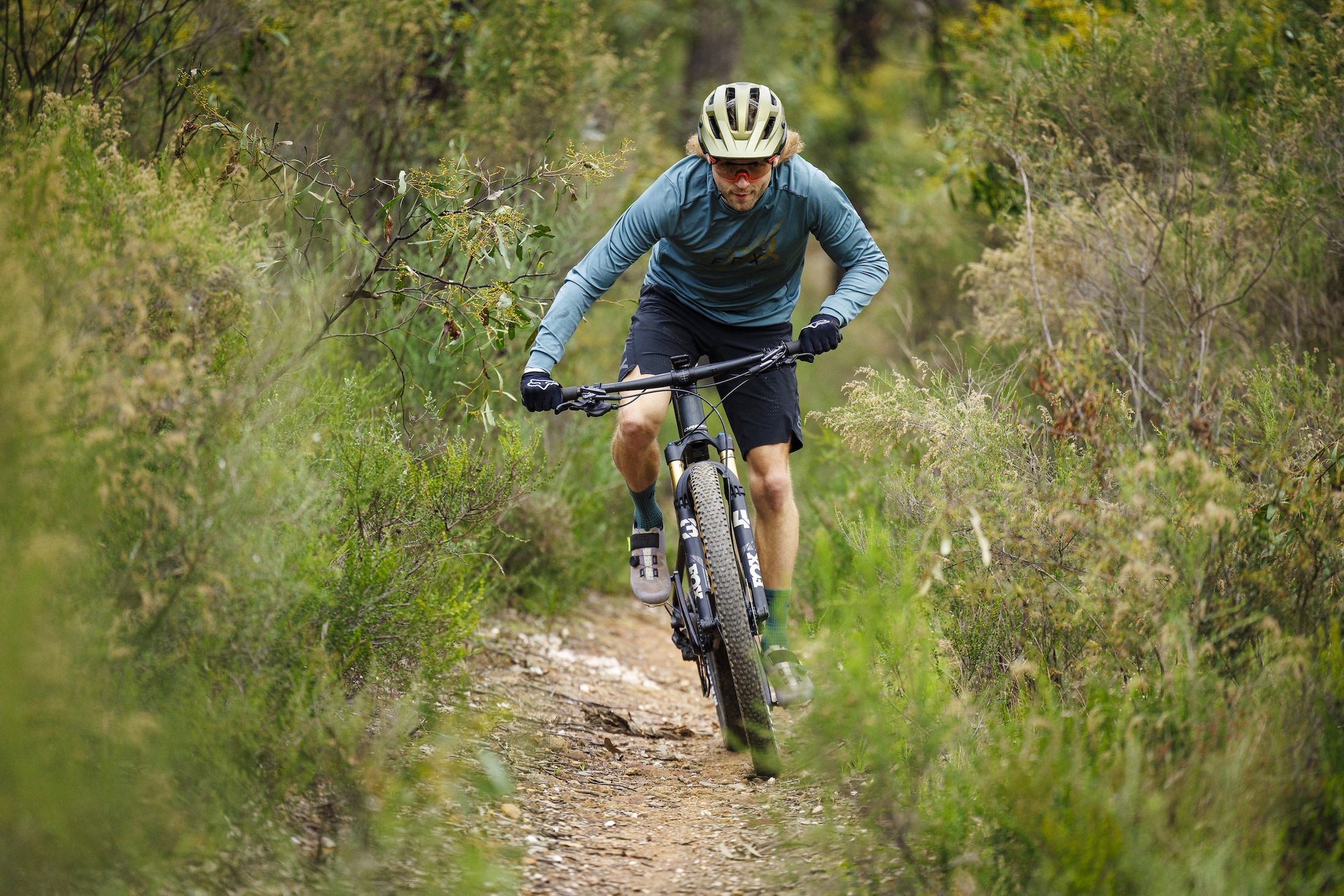
The Squidlock remote is unchanged from the previous Oiz, which is a good thing. The smooth paddle shape is one of the most ergonomic out there, and it offers a nice defined click between each position. The three suspension modes also remain the same;
- Open – Both fork & shock are open
- Medium – Fork remains open, shock compression damping is increased
- Firm – Both fork & shock are locked out
While each mode is usable, it’s the Medium position that delivers the key advantage over the Oiz’s competitors. The fork stays open to continue absorbing bumps, which is welcome on rocky and rooty climbs. Meanwhile the shock firms up to provide a stronger platform. That’s great for speeding along smoother singletrack, though the bigger benefit comes from the change to the bike’s dynamic geometry.
In this setting the effective seat angle steepens and places you in a more powerful pedalling position as you’re heading uphill. The taller ride height also increases clearance under the crankarms, which is hugely advantageous when you’re heaving your way up a ledgy, slow-speed tech climb.
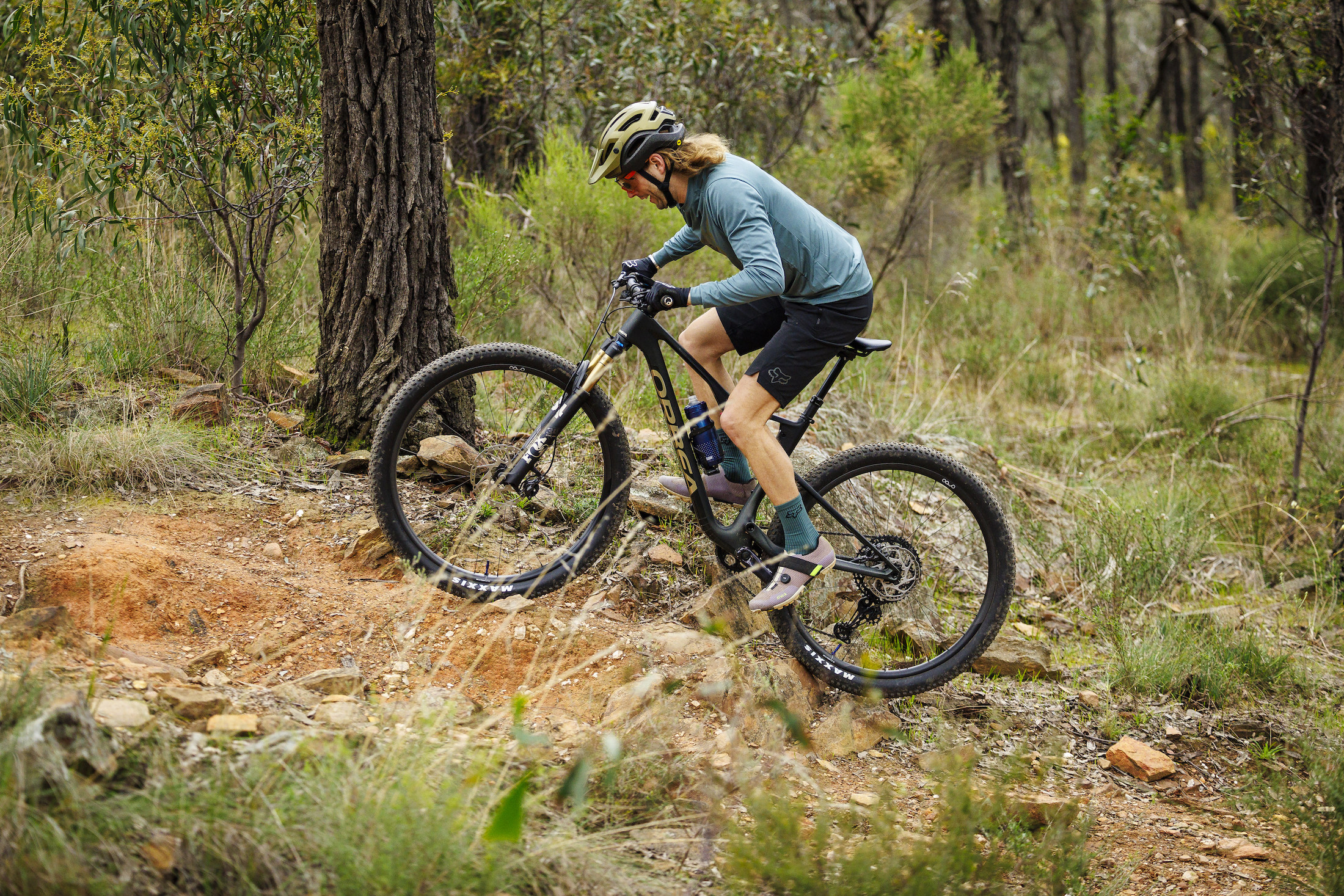
Sharp steering
The Medium suspension mode isn’t just for climbing either. On tight and twisty sections the firmer shock pushes more of your weight onto the fork to sharpen up the steering. In fact, this was my preferred setting for riding smooth and flowy singletrack where I could take full advantage of the stiff carbon chassis.
According to Orbea there’s been a 12% boost in lateral stiffness through the swingarm due to changes in the profile of the seatstay and chainstay tubes. While that number is hard for me to quantify, the Oiz feels plenty sturdy and the short 432mm rear centre length ensures changes of direction are prompt and precise. Along with the wide bars and grippy tyres, you can really crank it over into the corners.
It doesn’t quite slice and dice buffed-out turns like the short travel Epic World Cup or Supercaliber, but the rougher the trail gets, the more the advantage tips back in favour of the Oiz.
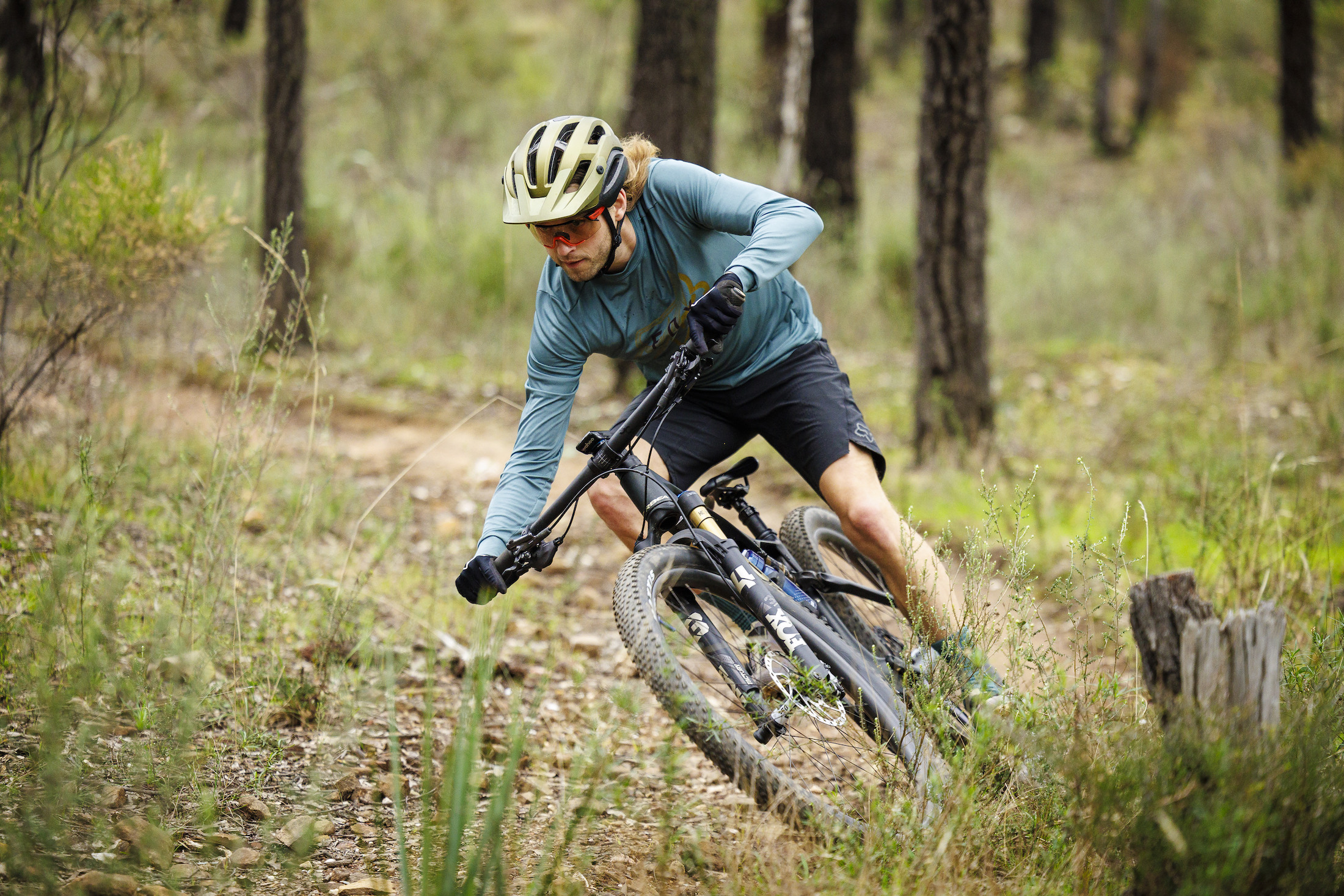
What didn’t we like?
While the suspension on the Orbea Oiz is plusher and more effective than most XC bikes I’ve tested, it doesn’t track as well as the dw-link rear end on the Pivot Mach 4 SL. When pedalling through particularly rocky and chunderous trails, the back end of the Oiz can bounce around a little more with the rear tyre occasionally scrabbling for grip.
This is the downside of employing a single-pivot suspension platform with a high level of anti-squat. Sure the Oiz is lighter than the Mach 4 SL, and it offers snappier pedalling performance when you’re sprinting flat-out. But it doesn’t eat up square-edge hits quite as seamlessly.
This may be a moot point as I suspect many XC racers would prefer the more responsive pedalling performance of the Oiz. But given the Squidlock remote is so usable, I do think that Orbea could lean on it harder and make the suspension more neutral in the Open position to really maximise its technical capabilities.
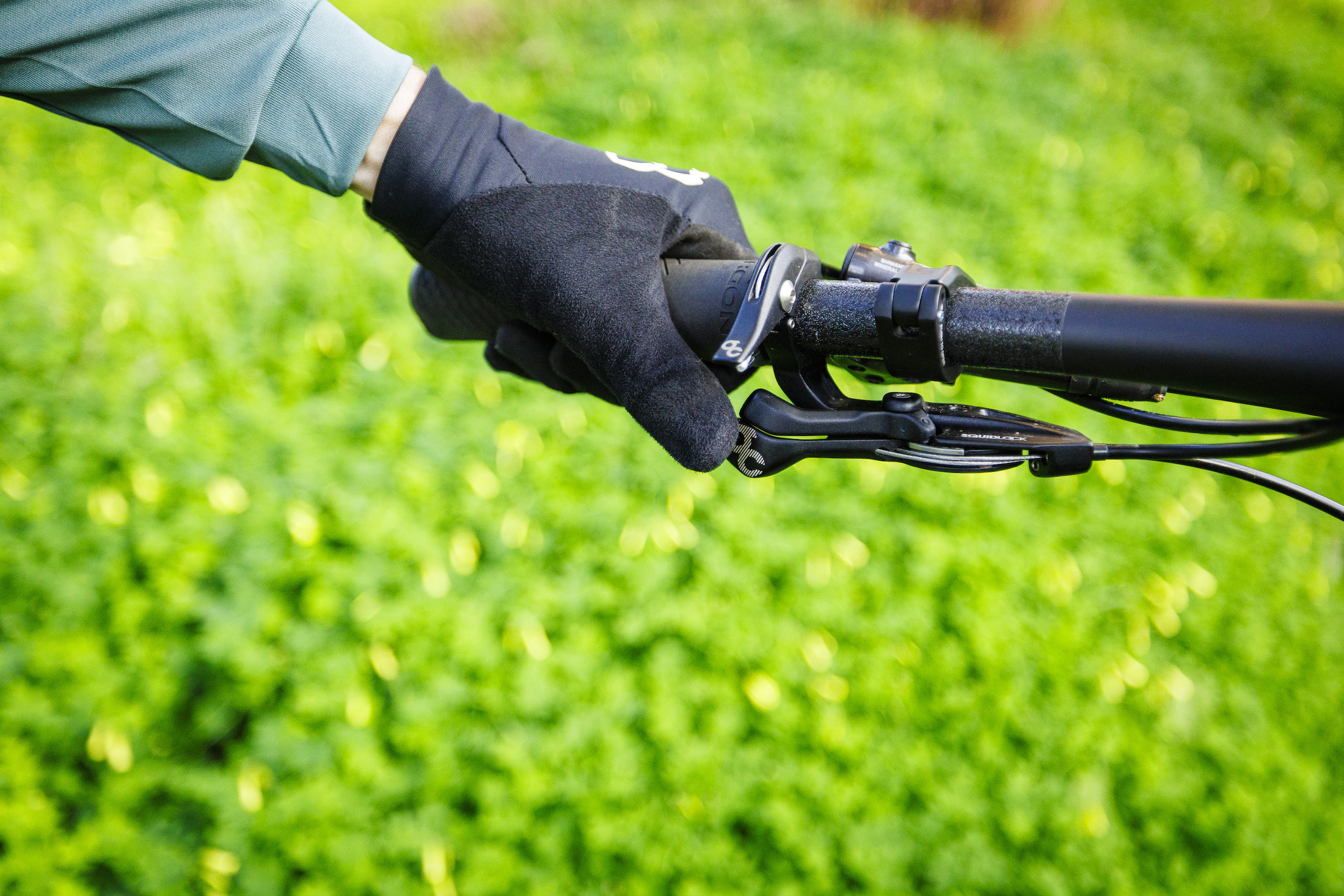
The Squidlock remote isn’t perfect
Speaking of the Squidlock remote, it too isn’t perfect. It only took me a few rides to adapt to the push-to-unlock function, though I never quite got used to the over-the-bar dropper lever.
Don’t get me wrong, it’s great that Orbea has spec’d the Oiz with a dropper in the first place. It’s just that you have to loosen your grip on the bars every time you use it, and the small lever requires a decent amount of force to actuate. I actually had some wrist pain following a particularly long trail ride.
It isn’t the end of the world, and to be fair the Squidlock is a fine solution given the constraints of its manually-controlled suspension. However, I reckon the Oiz would be a great candidate for an automated suspension platform, something like RockShox Flight Attendant or Fox Live Valve.
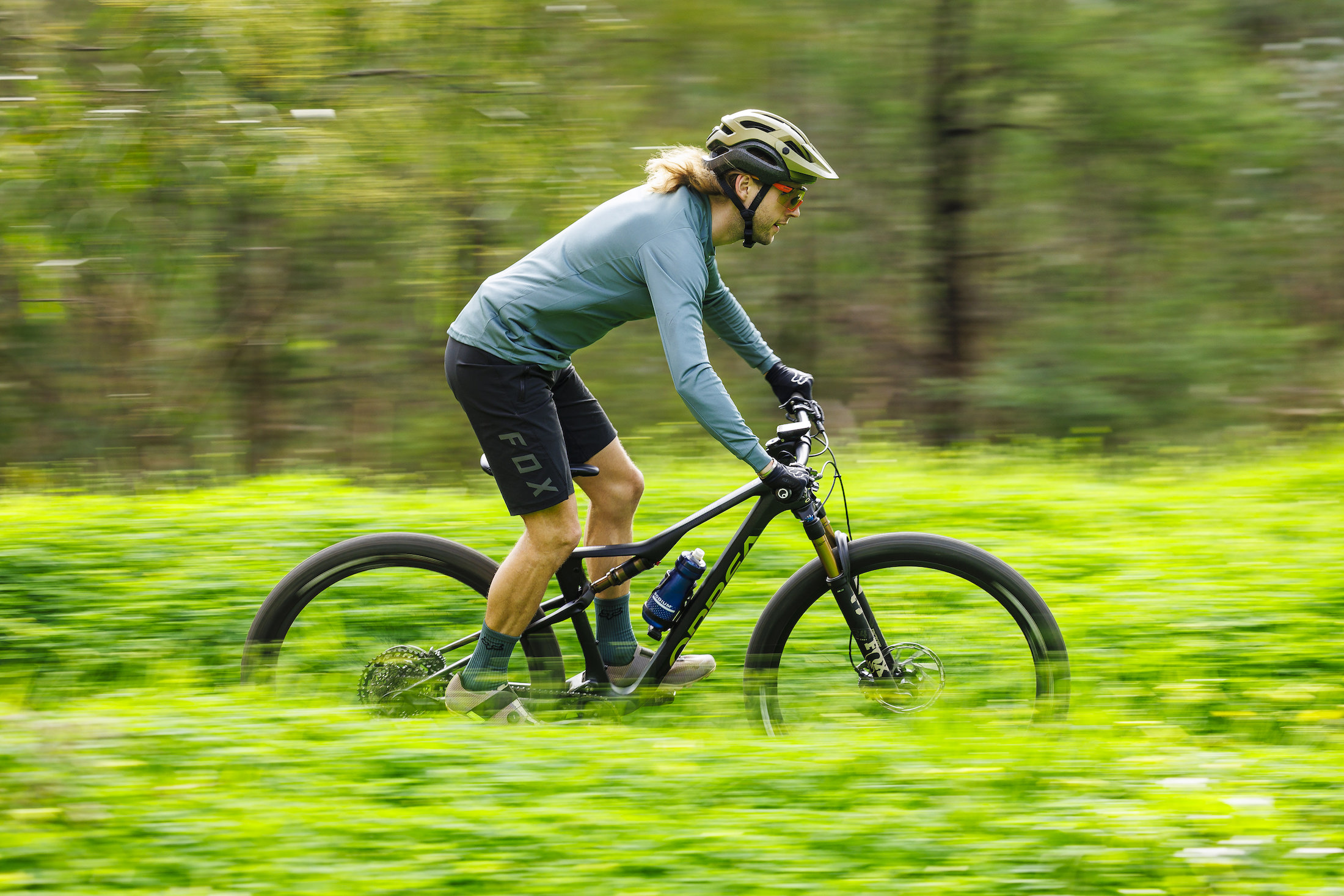
Component highs & lows
With its OMR full carbon frame and blingy Kashima-laden suspension, the Orbea Oiz M10 offers an appealing package that hits the sweet-spot in the range when it comes to value for money.
It also provided my first experience with an Oquo wheelset. Oquo is Orbea’s in-house wheel brand, and the MP30Team is its second-tier offering. These wheels feature carbon rims with a nice shallow and asymmetric rim profile that’s actually different between the front and rear. I found them to offer a smooth ride quality and provide a great platform for 2.4in wide tyres, and I like that they spec DT Swiss 350 hubs and J-bend spokes for ease of servicing.
The Shimano XT groupset has mostly worked well. The two-piston brakes are good, though the finned pads emit their usual rattle on the trail, which was joined by some general cable noise from the head tube and downtube area.
Rear shifting isn’t as light as it could be, as the cable has to bend quite heavily as it moves from the shifter into the frame. It left me unconvinced by the headset cable routing, particularly with the integrated spacers. I will say that the hidden steering limiter is a nice addition though. It’s entirely unnoticeable on the trail, but still prevents the handlebar controls from smashing into the top tube in the event of a crash.
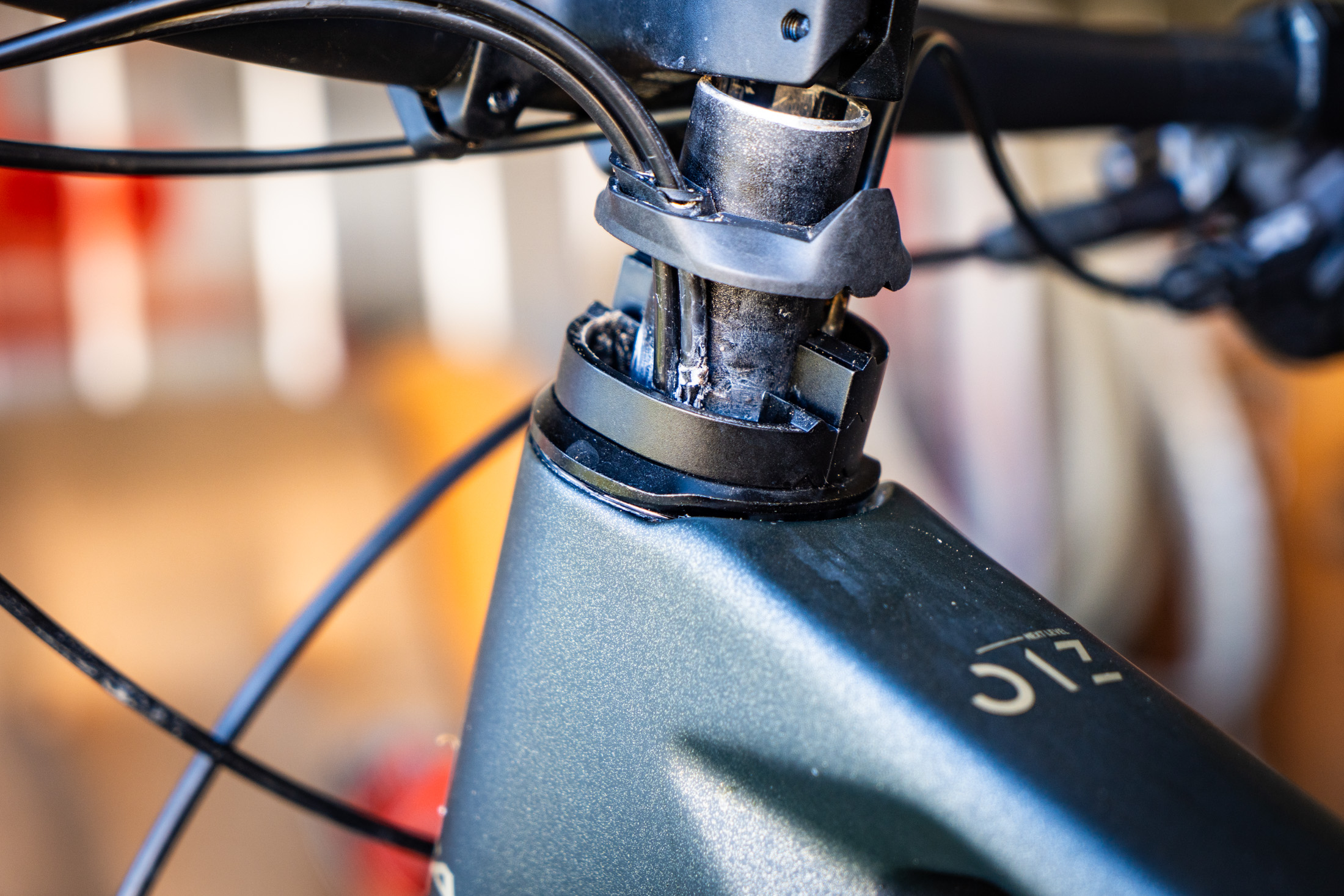
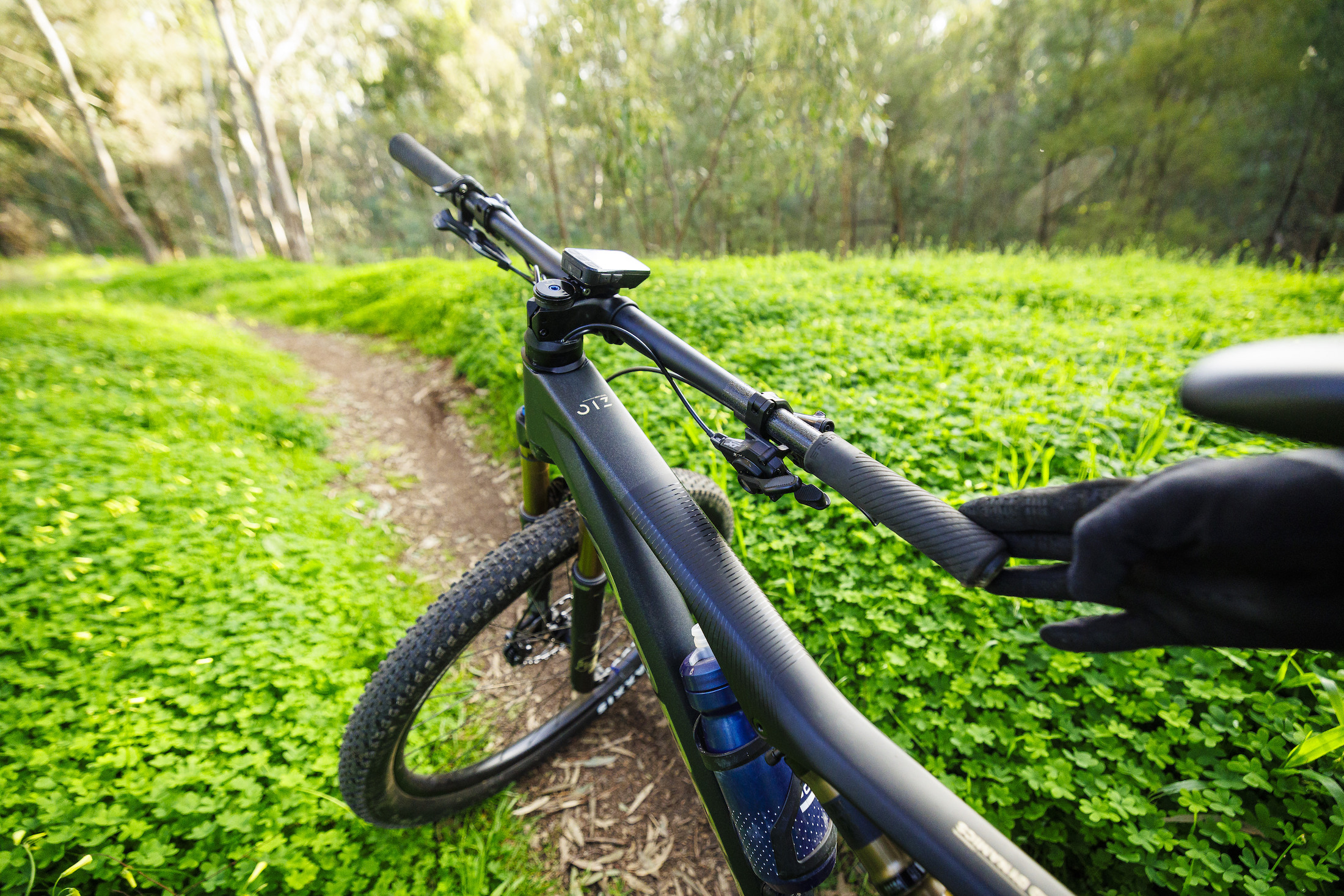
Many will be happy to see the Oiz move from a press-fit to a threaded BB, and it’s worth noting that frame is compatible with both 52 and 55mm chainlines with room to run up to a monster 38T chainring. There’s plenty of mud clearance around the 2.4in tyres, and the addition of a rubber gasket between the chainstay yoke and the back of the seat tube helps to keep debris from getting jammed up in there.
Unfortunately clearance is less generous for the second bottle mount on the seat tube. In fact, I struggled to fit most 600ml bottles in this position, with the bite valve actually contacting the shock. I expect there will be more clearance on the larger frames, but for those on the Small and Medium frames, you may need to seek out a specific cage and bottle to fit in that secondary position. One option would be Orbea’s own OC MX20 side-entry cage, which features longer mounting holes that allow you to position the bottle further down.
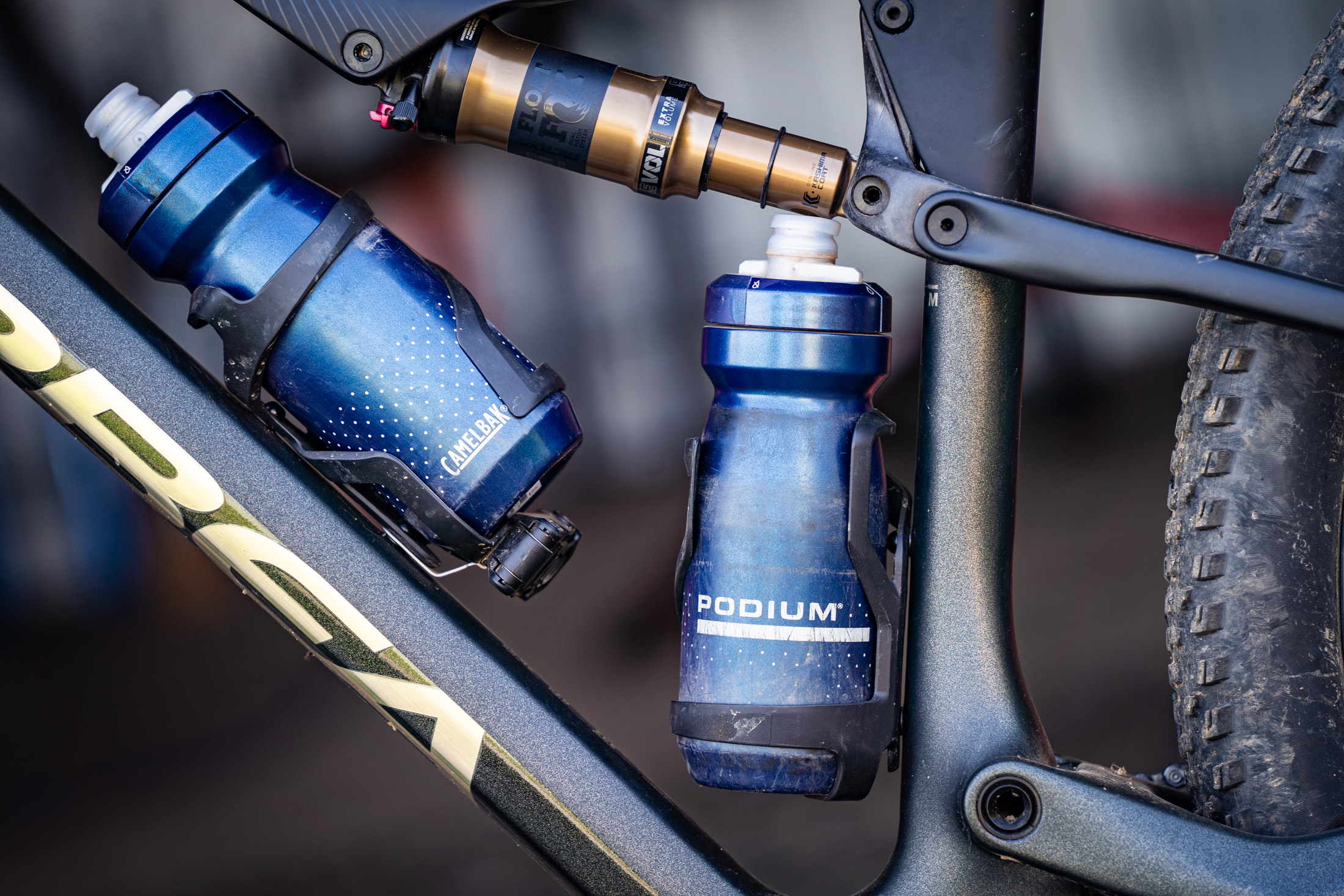
What upgrades would you make?
In terms of performance there’s not a lot I would change about the Orbea Oiz M10. However, there’s certainly room to make it lighter while dialling in to your personal preferences.
Along with changing the saddle and grips, I’d also upgrade the dropper post to a Fox Transfer SL. For a rider of my height, I think 100mm of drop is perfect for an XC race bike as it allows you to get the saddle out of the way on the descents without forcing you to squat down as far every time you compress the post. The Transfer SL is nearly 200g lighter and it’s also faster in action compared to the somewhat sluggish MC20 dropper post.
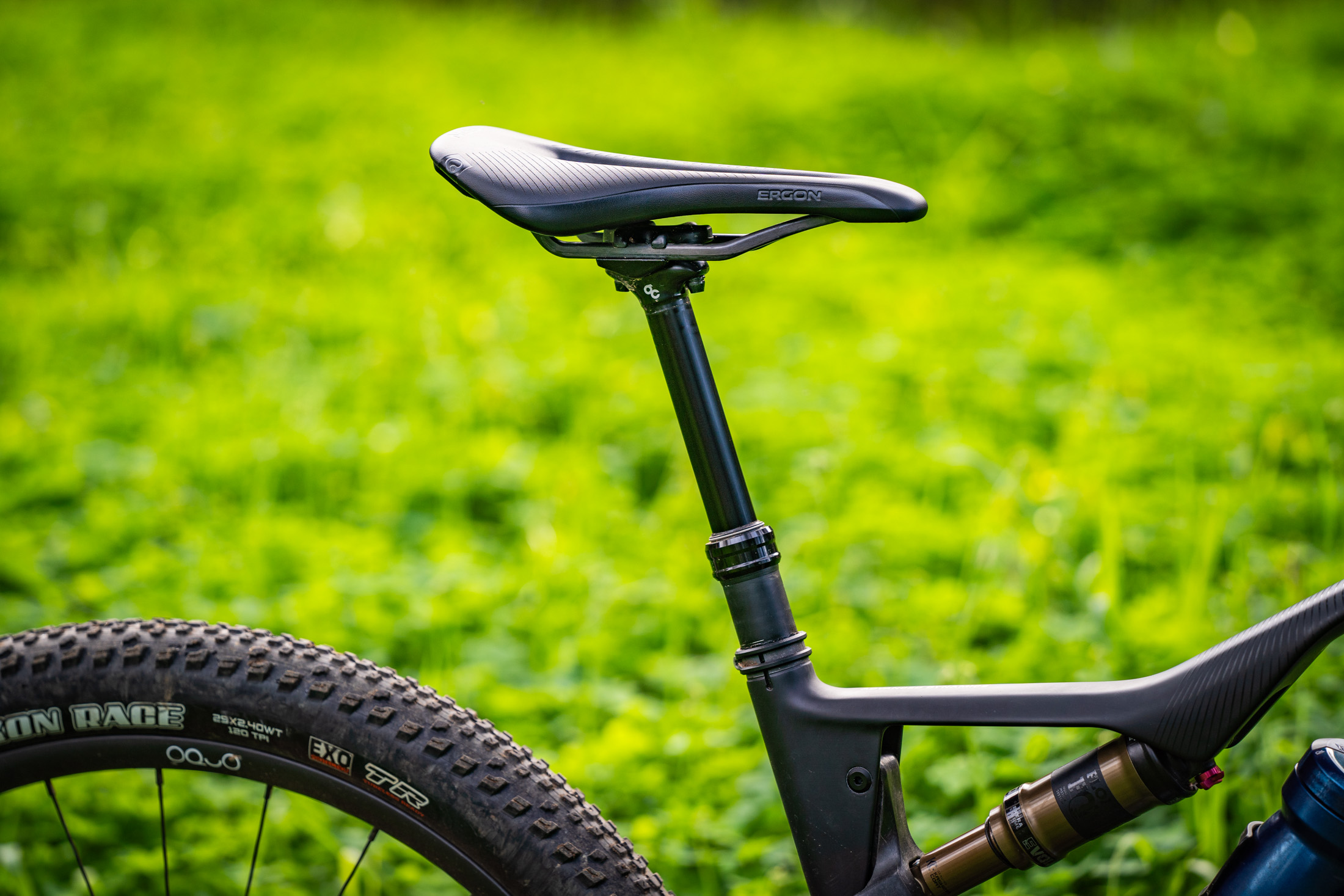
I’d also consider getting rid of the Squidlock and replacing it with a 3-position RockShox TwistLoc remote. This would allow you to fit an under-the-bar dropper lever, which would be much easier on your thumb.
The stock Shimano brake rotors are kinda heavy, and the slightly rounded edges don’t provide the most positive bite. I’d swap those with some XTR rotors to sharpen things up and drop some rotational weight. I’d also fit some non-finned brake pads to eliminate the annoying rattle.
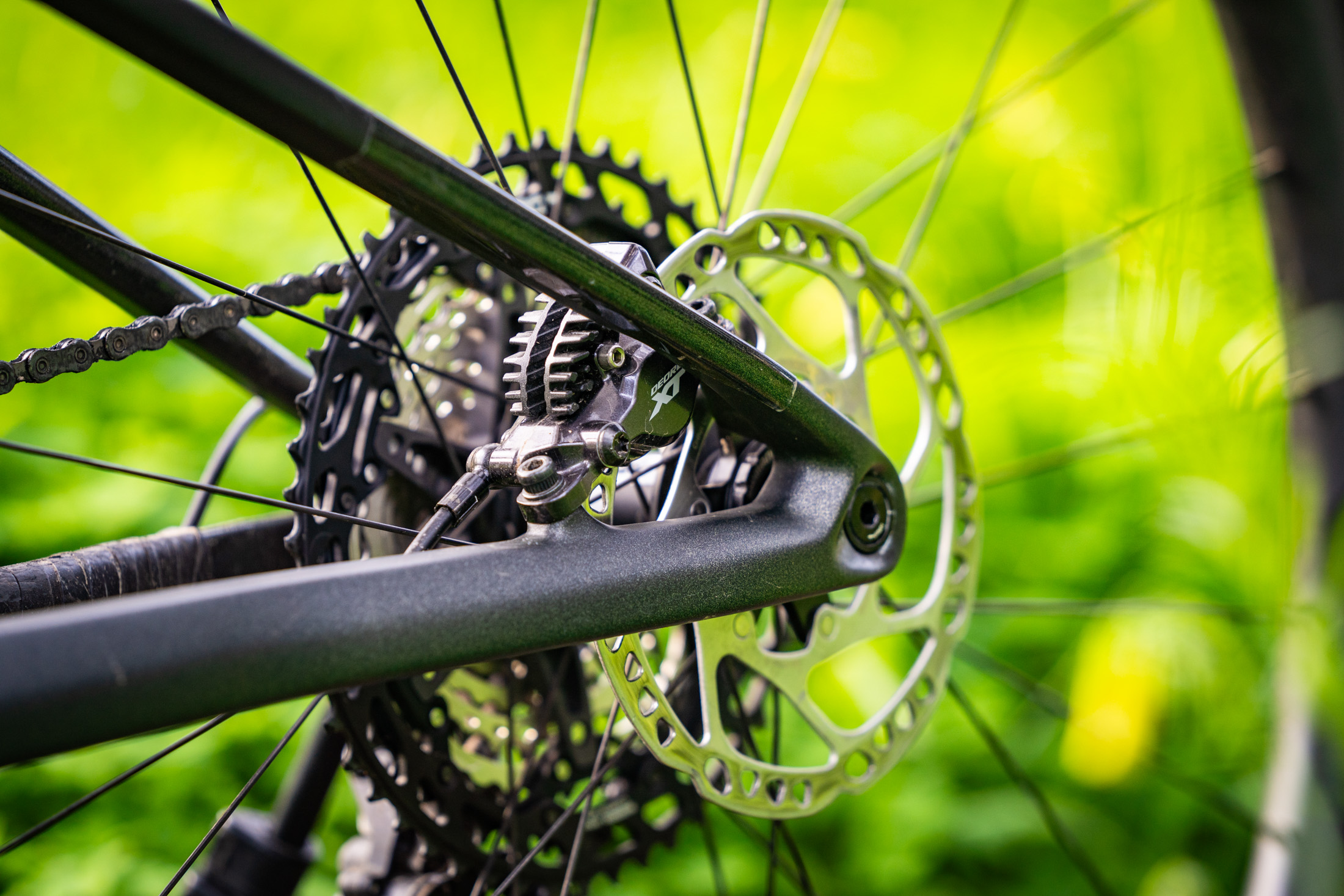
On the note of the brakes, heavier riders should take note that the OMR frame and its post-mount rear calliper will accept up to a 180mm rotor. This is a point of difference with the lighter OMX frame and its flat-mount rear brake calliper, which is limited to 160mm.
Orbea Oiz vs Scott Spark
Out of all the XC bikes I’ve tested, it’s the Scott Spark RC that is the closest competitor to the Orbea Oiz.

The latest Spark also features 120mm of travel front and rear, and both its fork and shock are cabled up to a three-position handlebar remote called the TwinLoc. Where things differ is with the Spark’s proprietary Nude shock, which reduces rear travel to 80mm in the middle Traction Control mode. This provides greater support and a firmer platform compared to the Medium position on the Oiz.
Because that Traction Control mode is so effective, Scott’s engineers have developed the Spark with a low anti-squat figure that hovers around 80% at sag. Compare this to the Oiz, which sits at around 115% at sag.
This means that the Spark doesn’t pedal particularly well in its fully open Descend mode, and so it is far more reliant on its TwinLoc remote when you need to hustle. The upside is that when the trail gets rough and rowdy, the suspension is plusher and more active. Both bikes are great descenders, but the Spark offers more grip and control through the chunder.

Further bolstering the Spark’s capability is its modular headset cups that allow you to adjust the head angle. The frame is also rated for use with up to a 130mm travel fork, allowing you to morph it into a lightweight trail bike. In fact, that’s exactly how the regular Spark is configured.
That kind of versatility will be less of a concern to dedicated XC racers. And if you value sharp pedalling performance, the Oiz is undoubtedly the more naturally efficient of the two. It’s also the better technical climber thanks to its fork remaining open in that Medium suspension setting.
Otherwise the Oiz and Spark share a lot of similarities when it comes to geometry, frame features and build kits. They’re both available in an alloy variant, with prices starting at $4,599 AUD for the Spark. Which one you choose may simply come down to availability and your preference for the stealth bomber-looks of the Spark with its hidden shock, or the elegant lines of the Oiz.
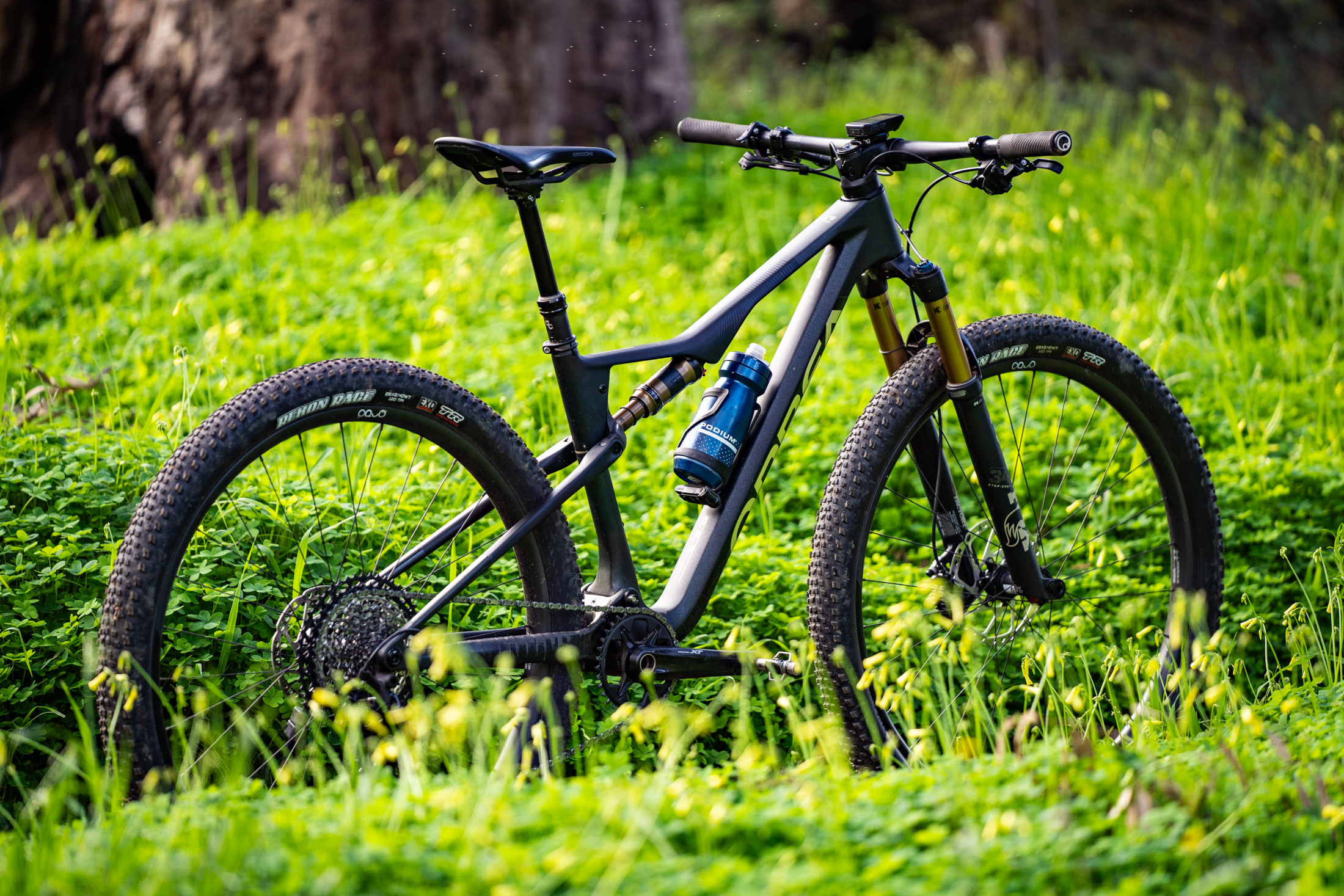
Flow’s Verdict
With its new chassis, updated geometry and increase in travel, the 2023 Orbea Oiz has successfully elevated its capability and versatility over its predecessor.
This bike absolutely rips up technical XC trails, offering a plusher ride with more grip over rough terrain. Combined with the longer wheelbase and slacker head angle, the Oiz exudes a remarkable degree of confidence on the descents, allowing you to push it quite hard.
It’s still an excellent climber thanks to its efficient pedalling manners and remote-adjustable suspension. The Squidlock remote isn’t perfect, and it adds cable clutter that isn’t particularly well managed through the headset. If you’re less enthused by constantly toggling a remote and you tend to ride on smoother trails, you may prefer a firmer and shorter travel bike such as the Trek Supercaliber or Specialized Epic World Cup.
The Oiz is more versatile than those two bikes however, and on rougher trails it’s more fun too. In that sense it’s closer in performance to the latest Scott Spark RC and Pivot Mach 4 SL. Yes it’s lightweight and efficient, but the contemporary geometry and extra travel comes together to produce a fantastically well-rounded package that is capable of going well beyond the race track.
